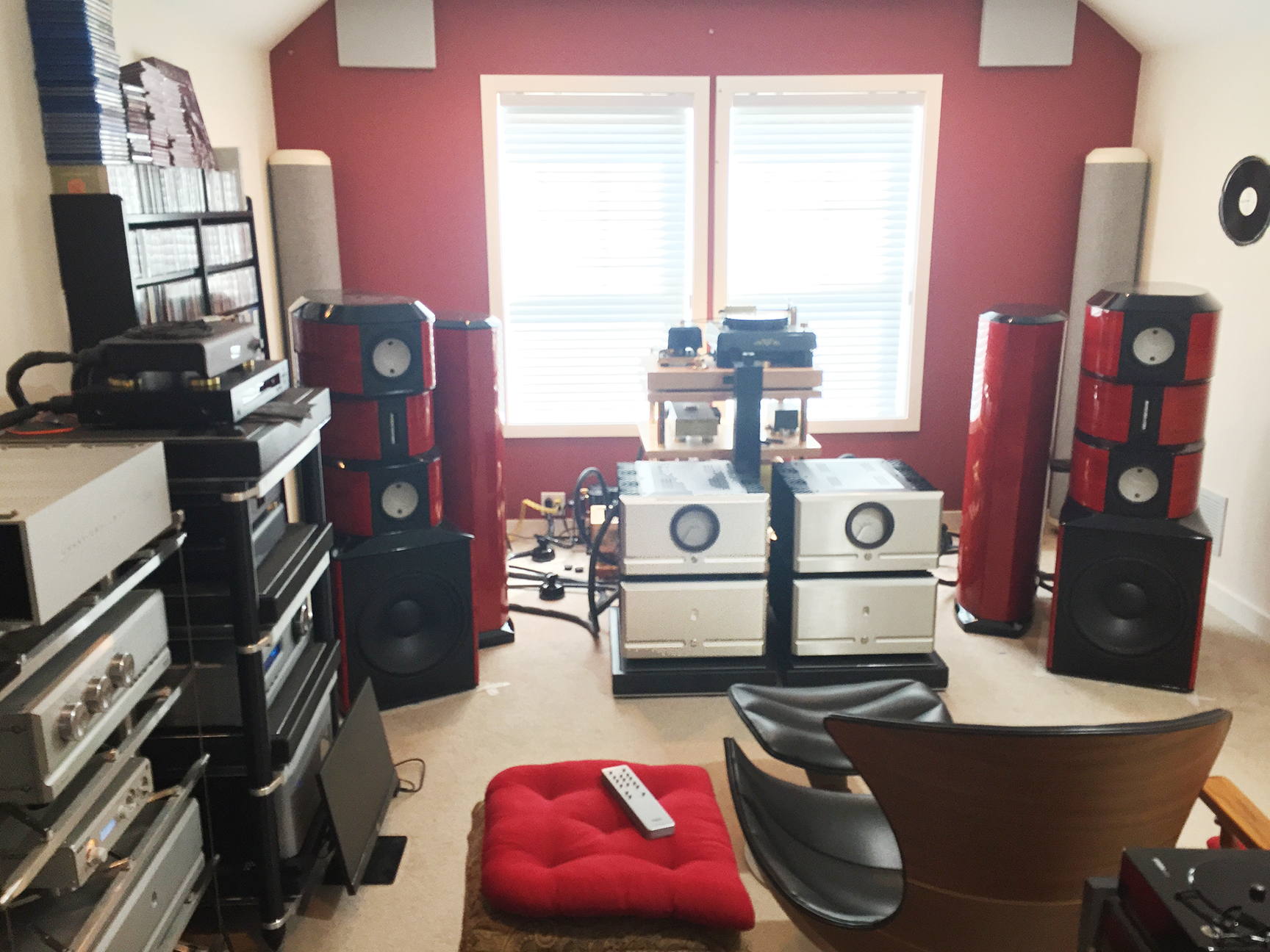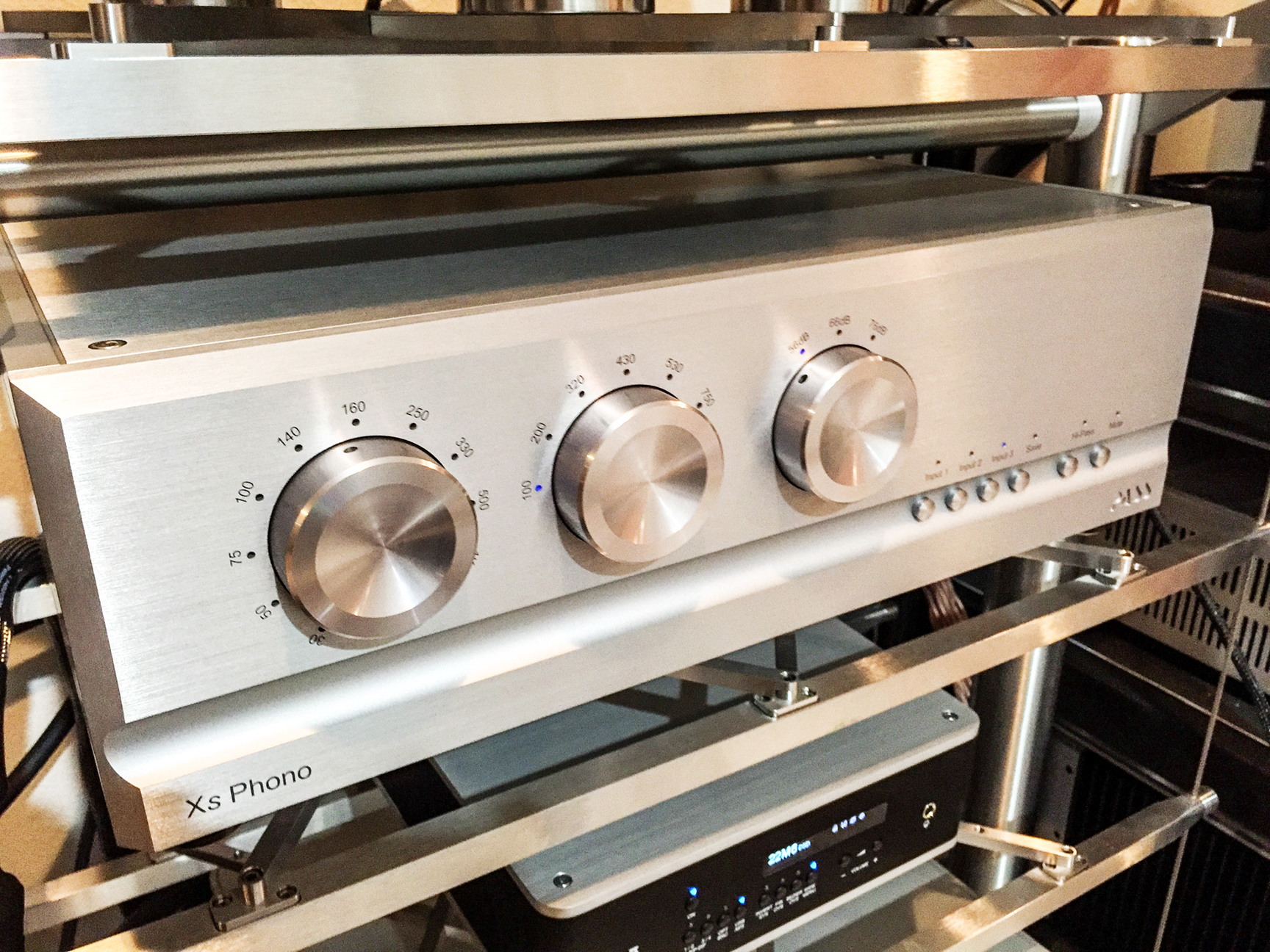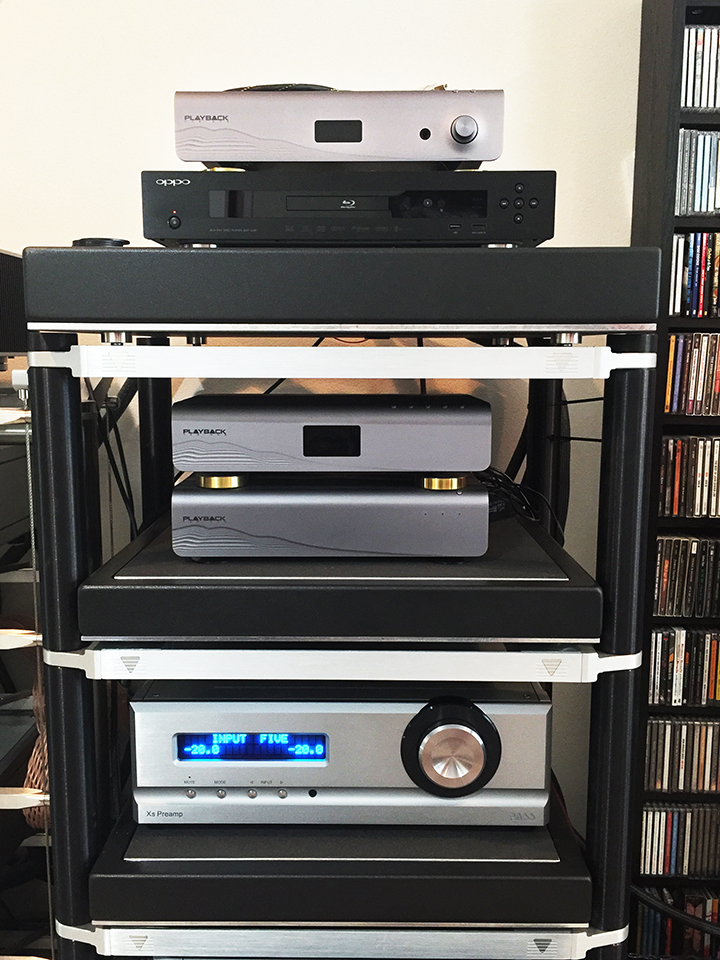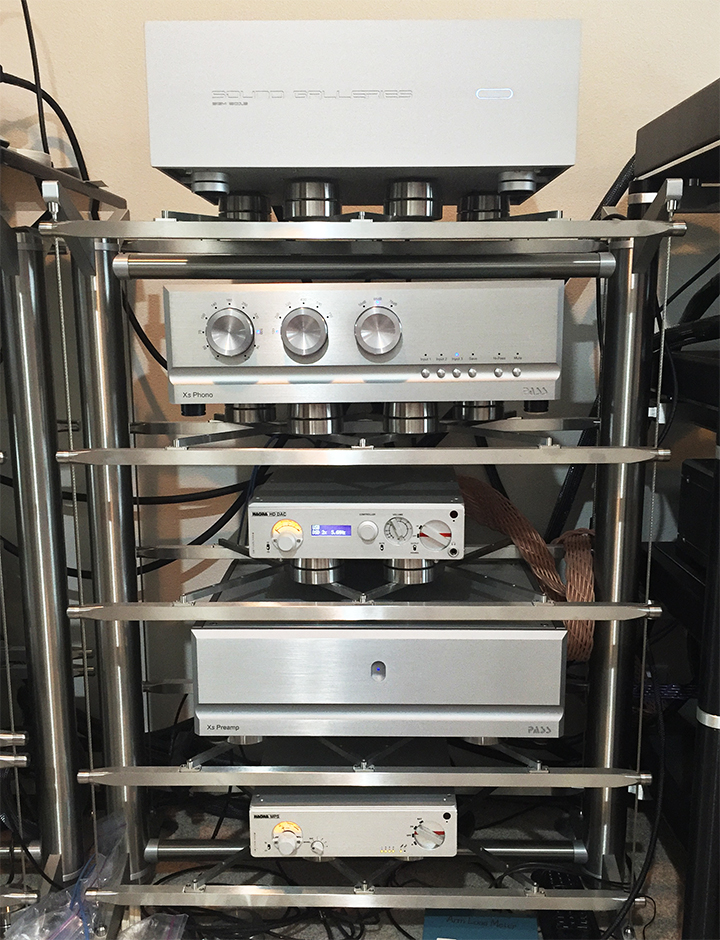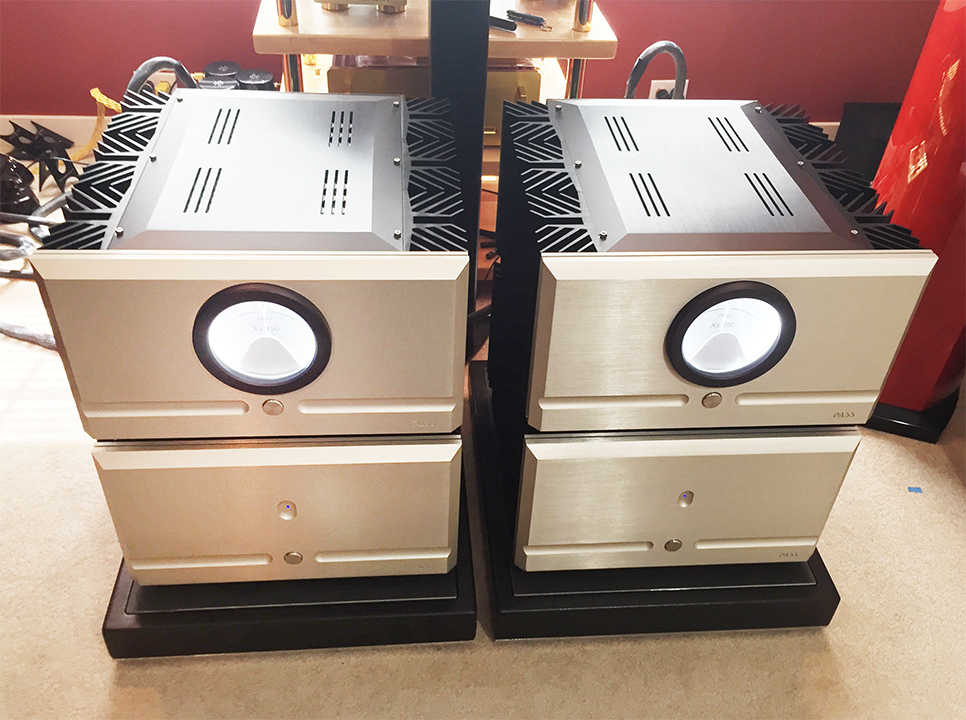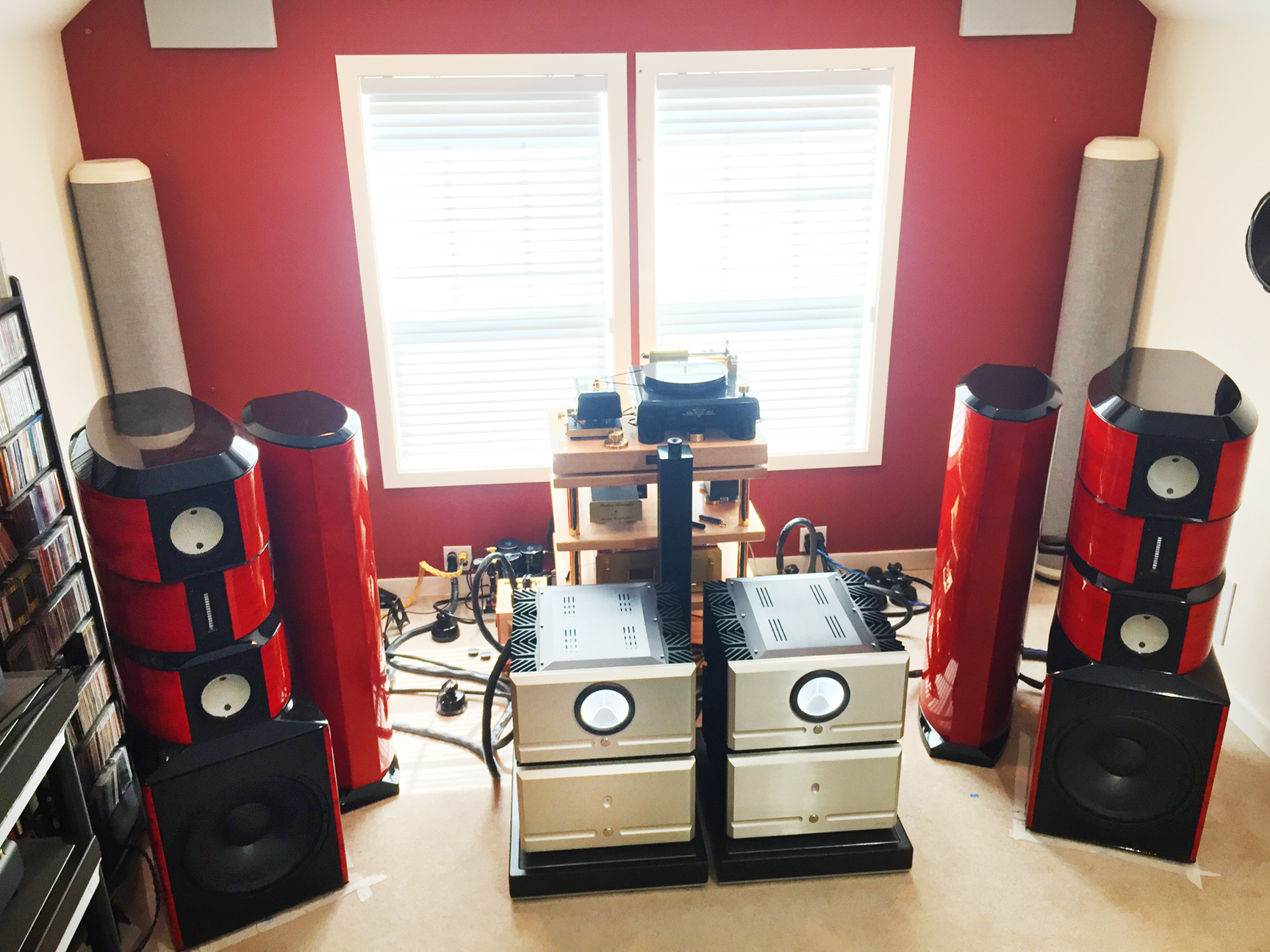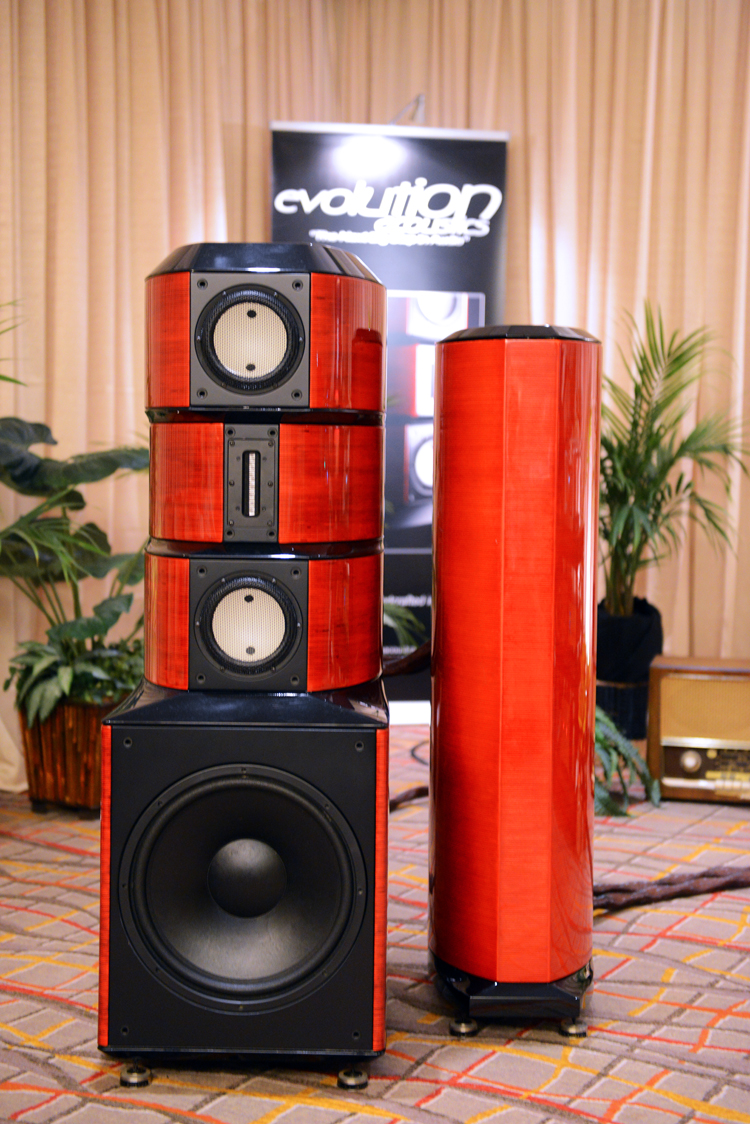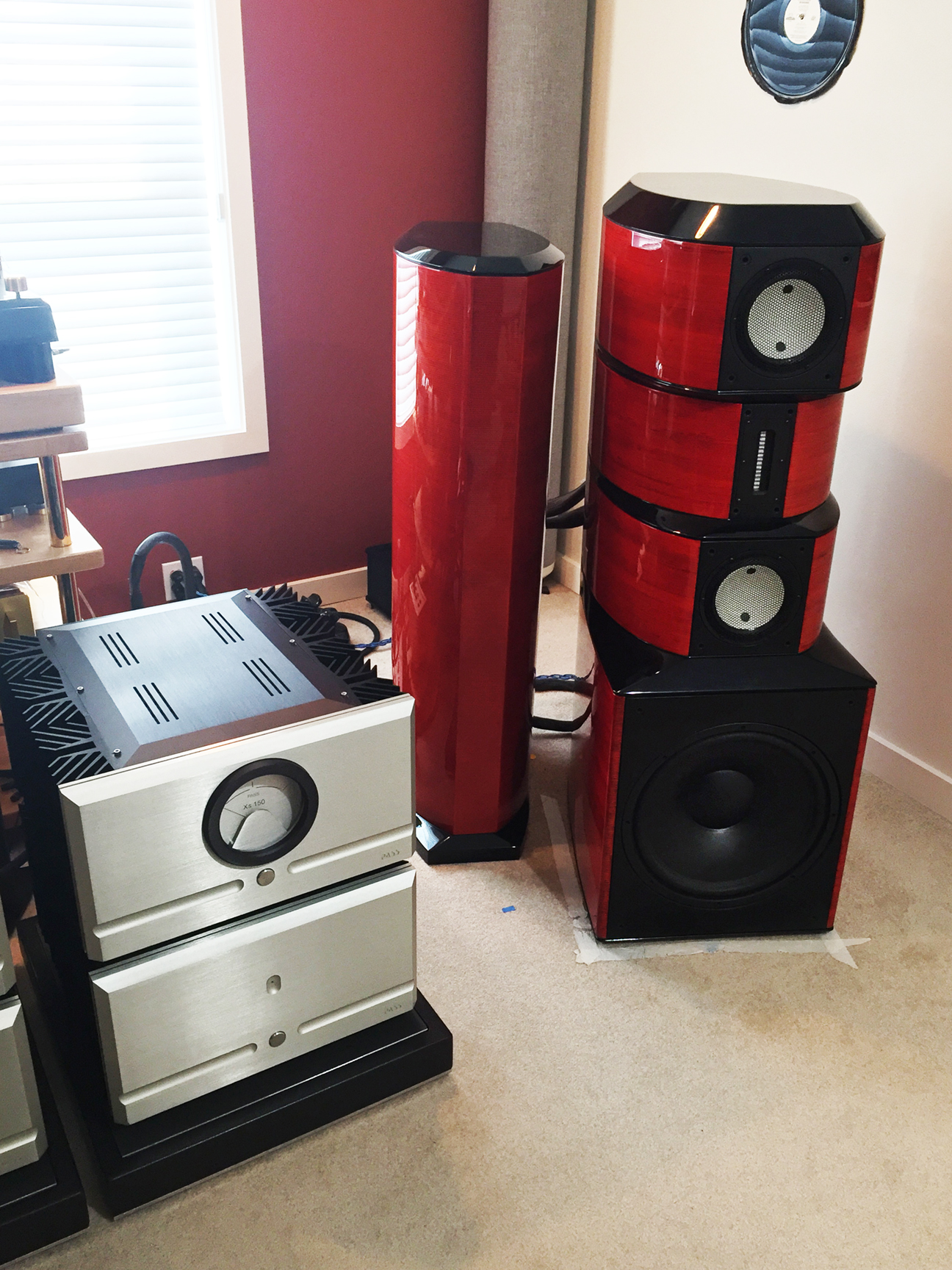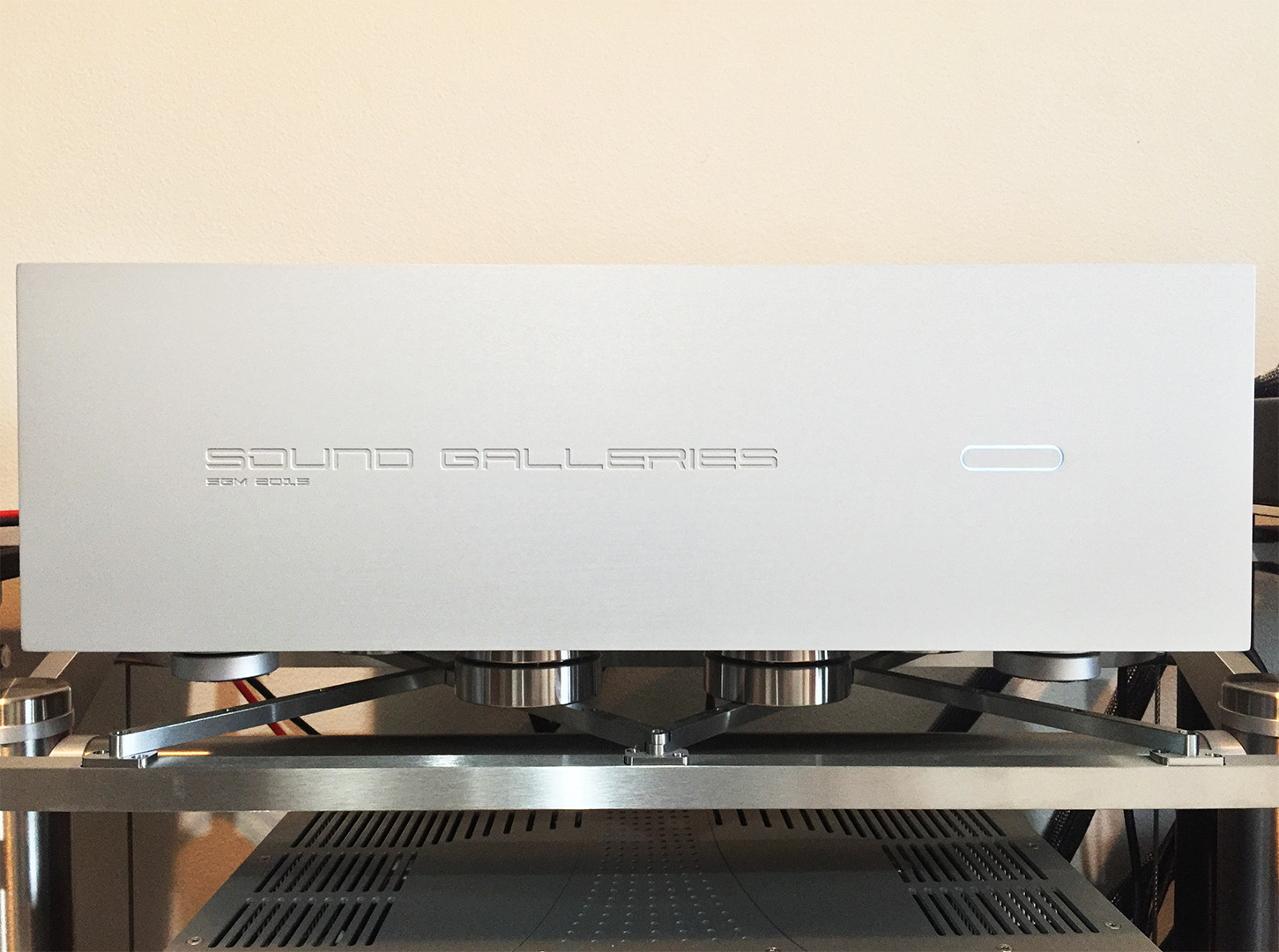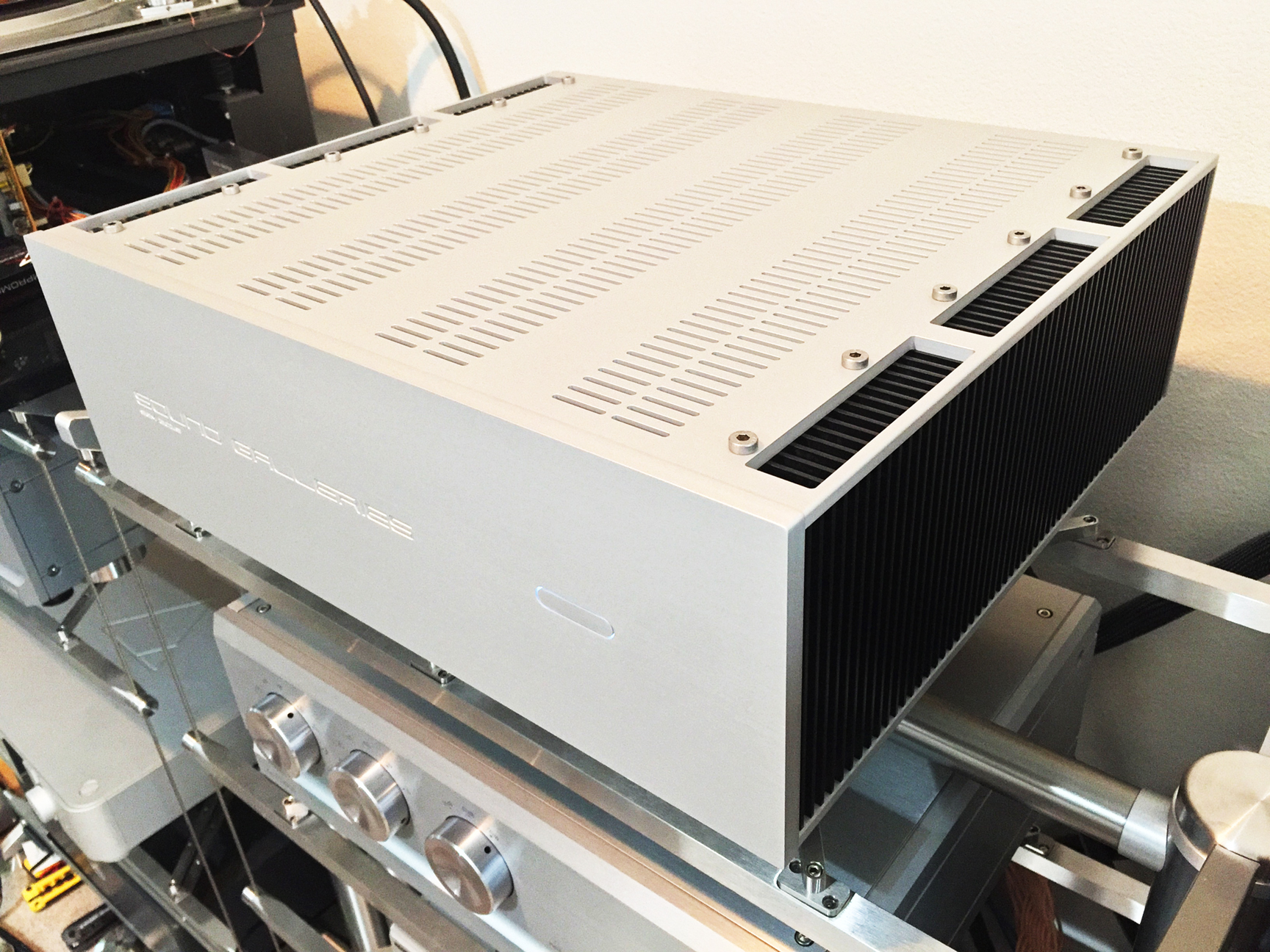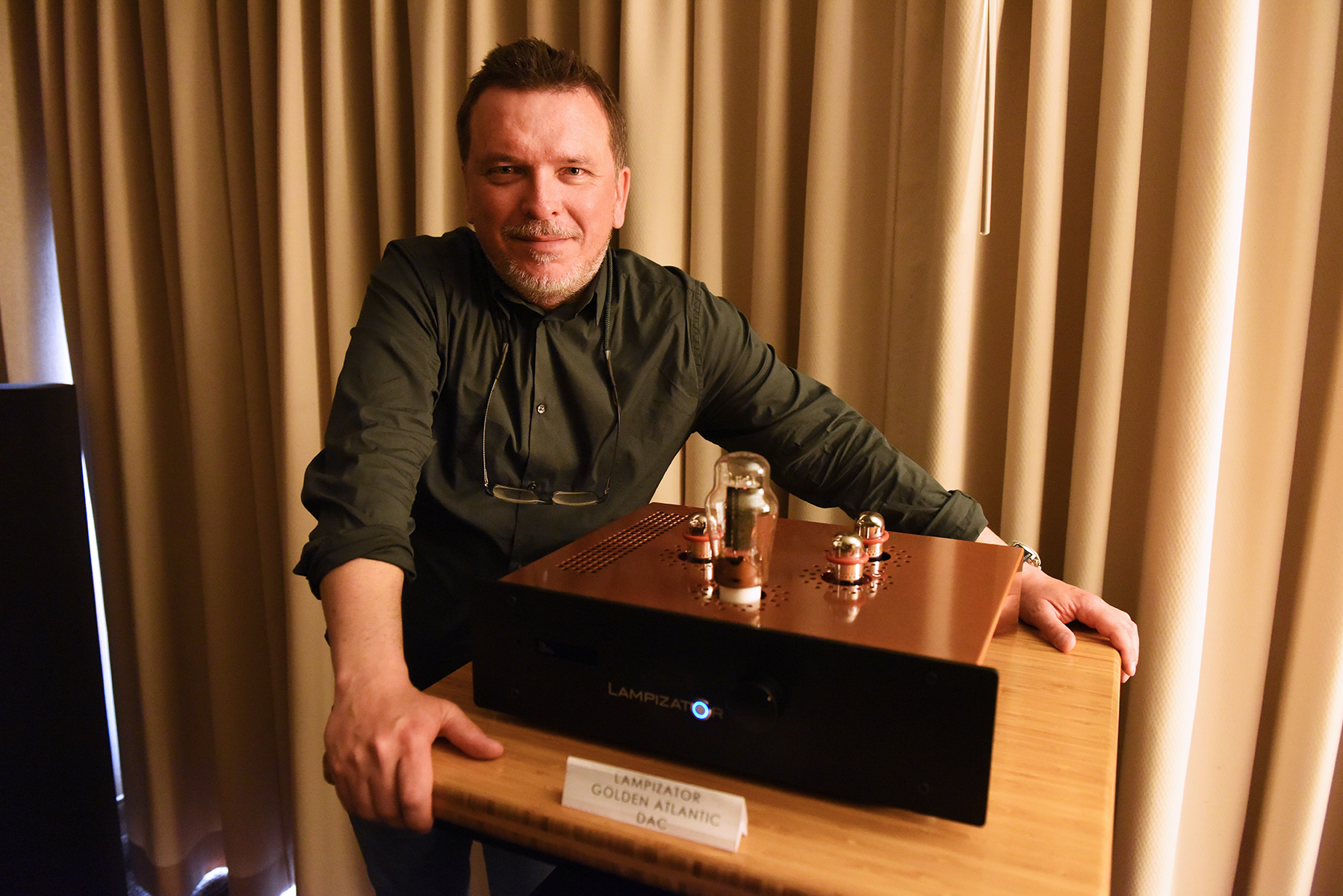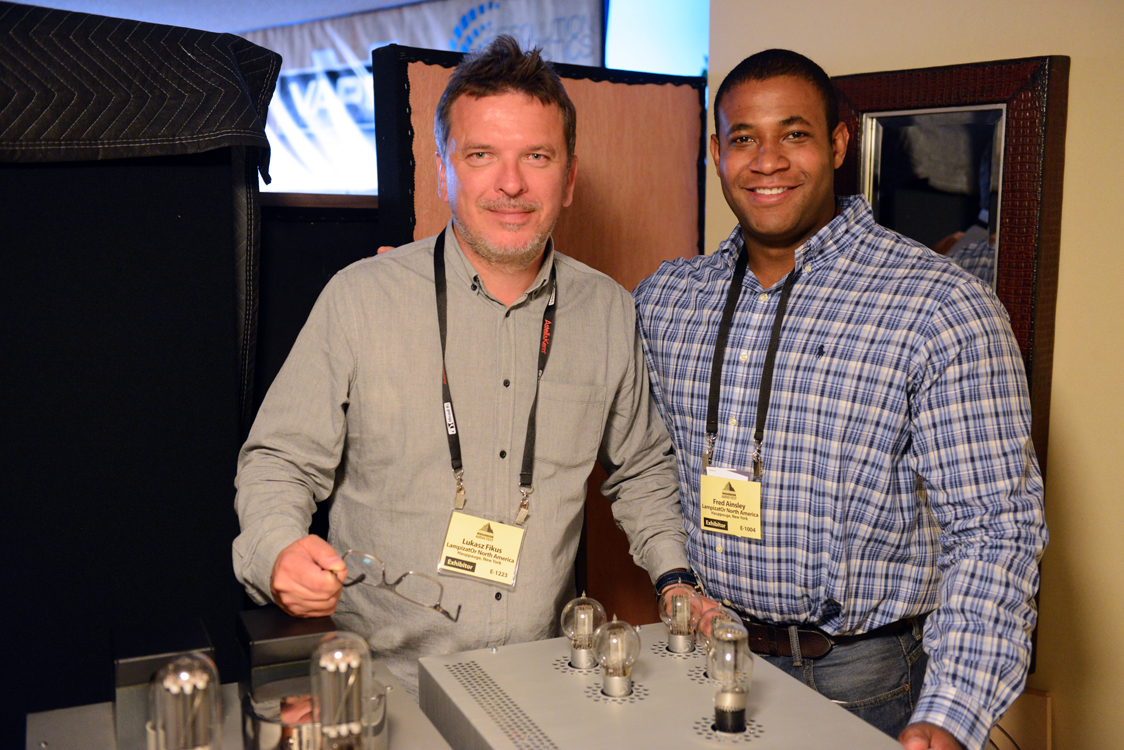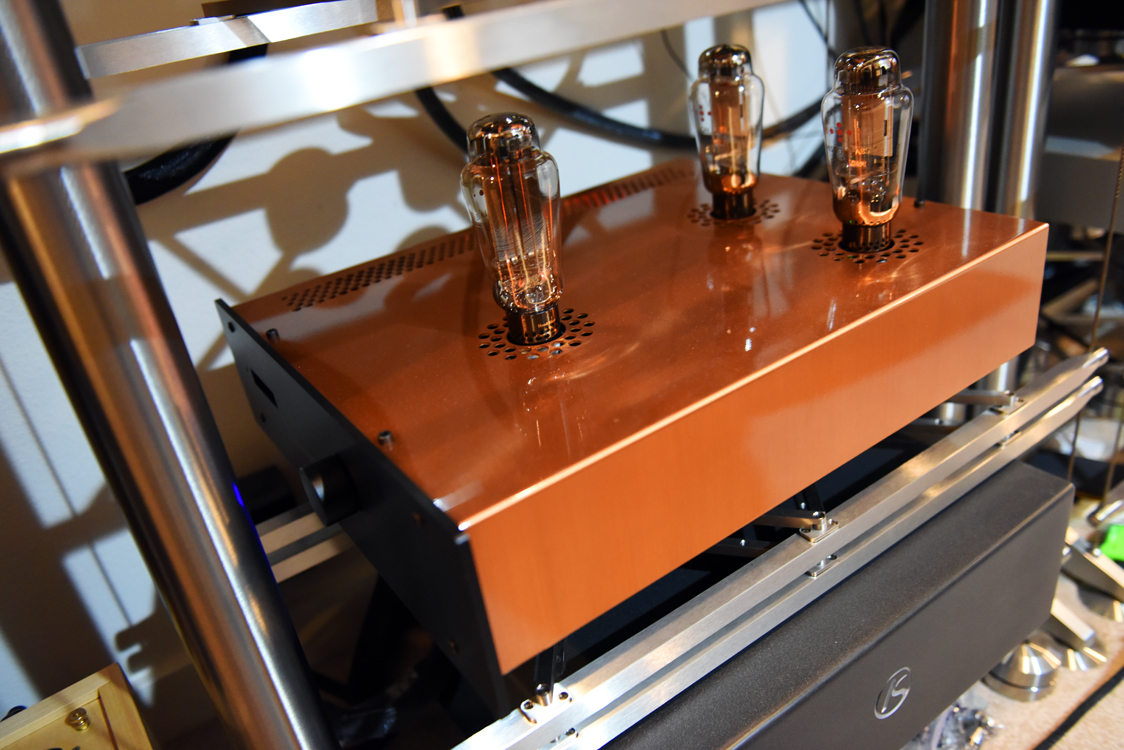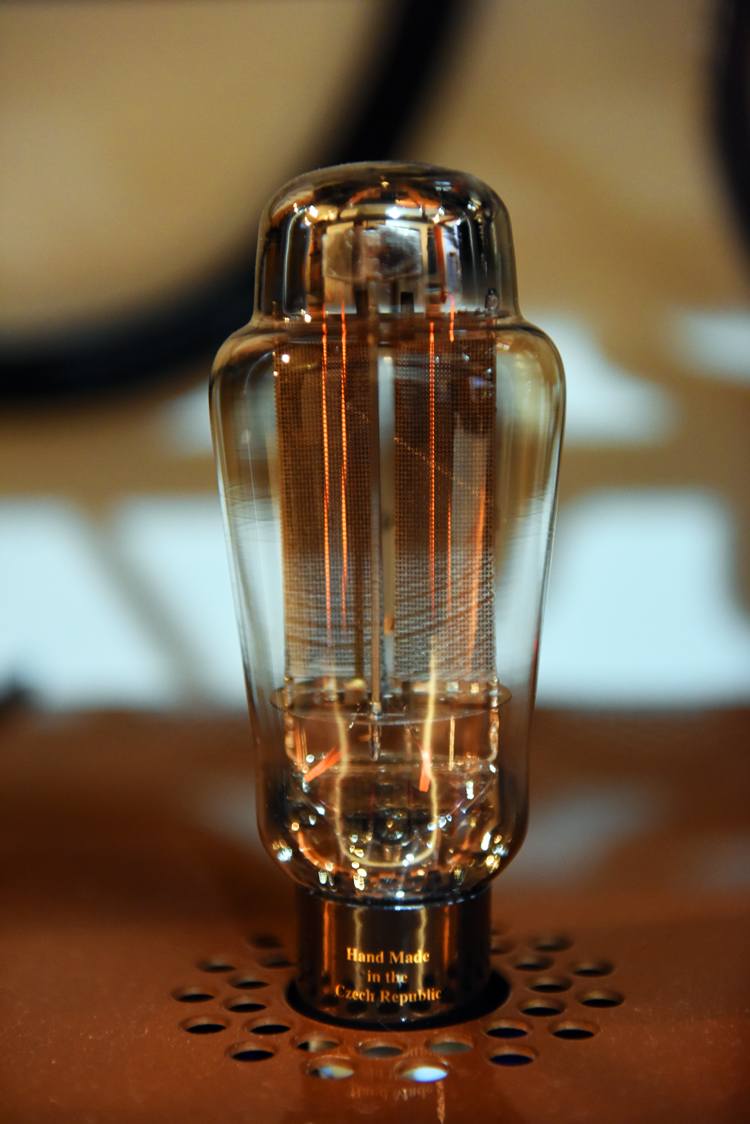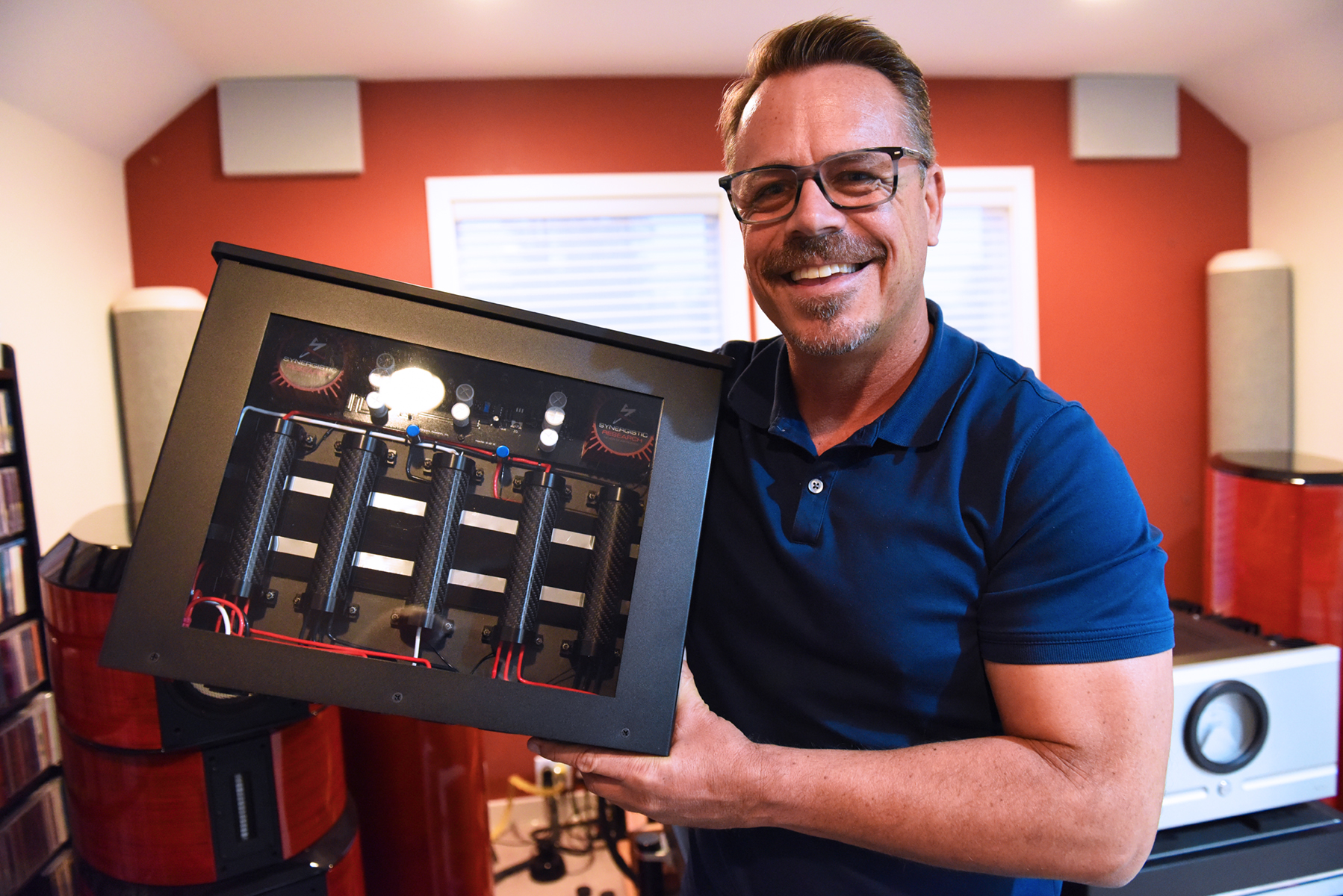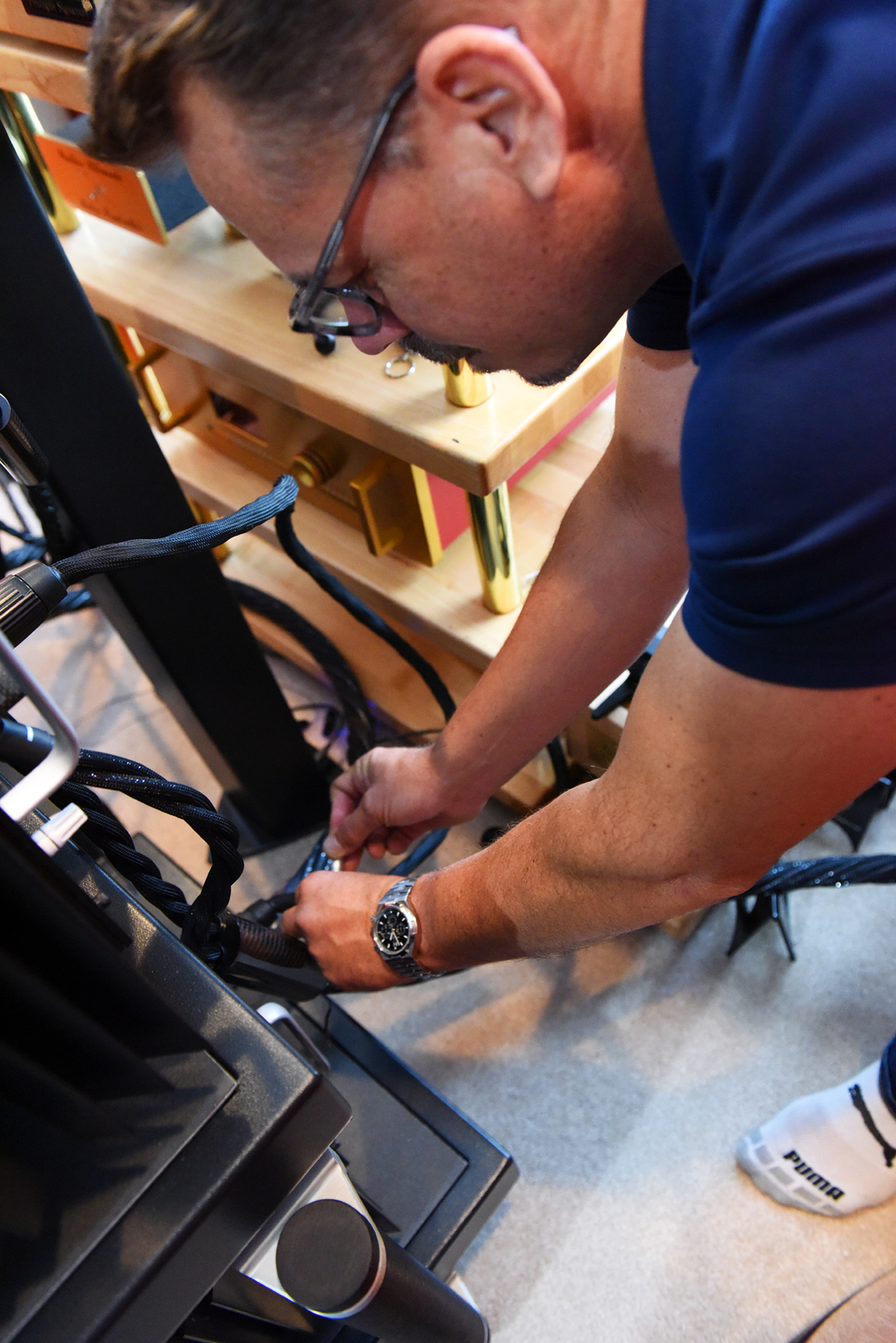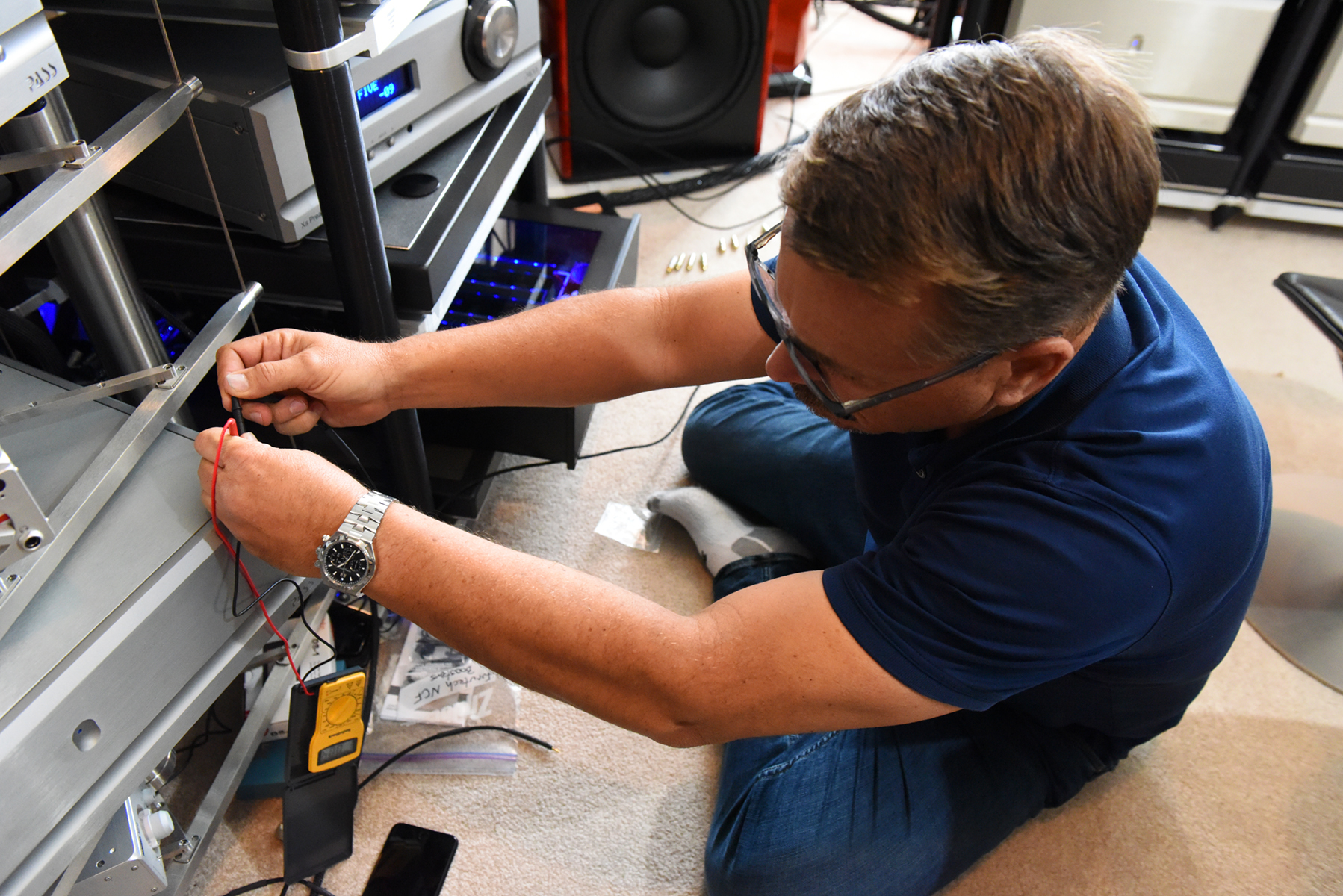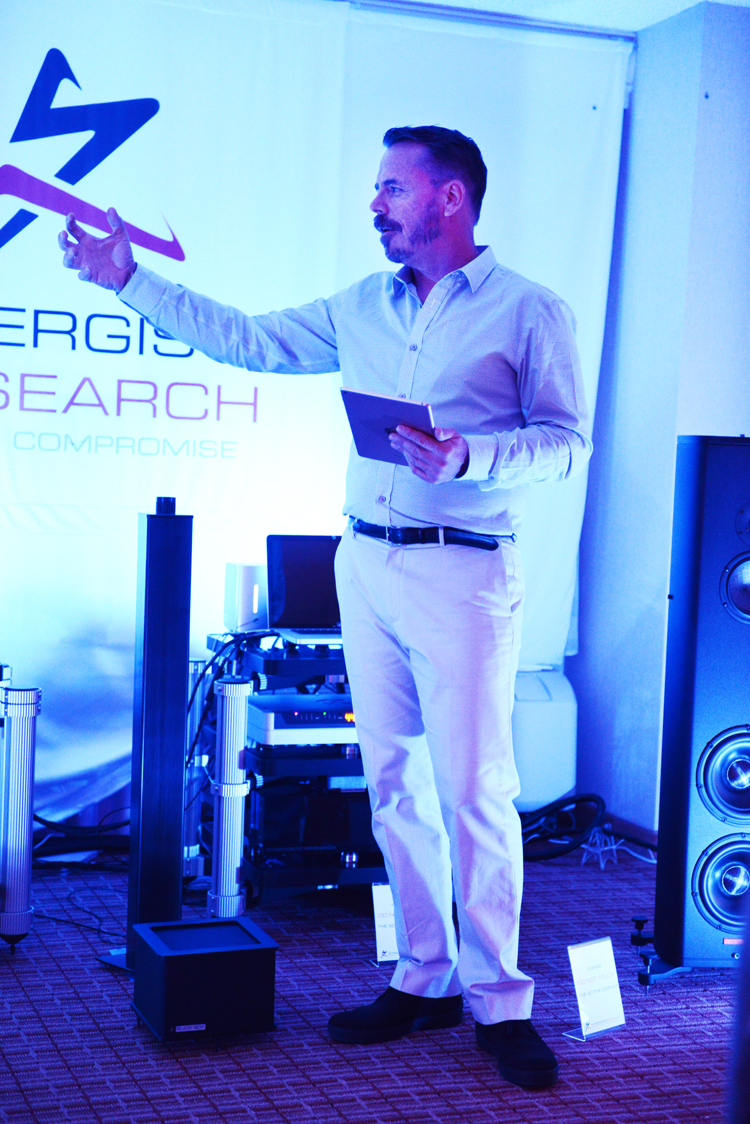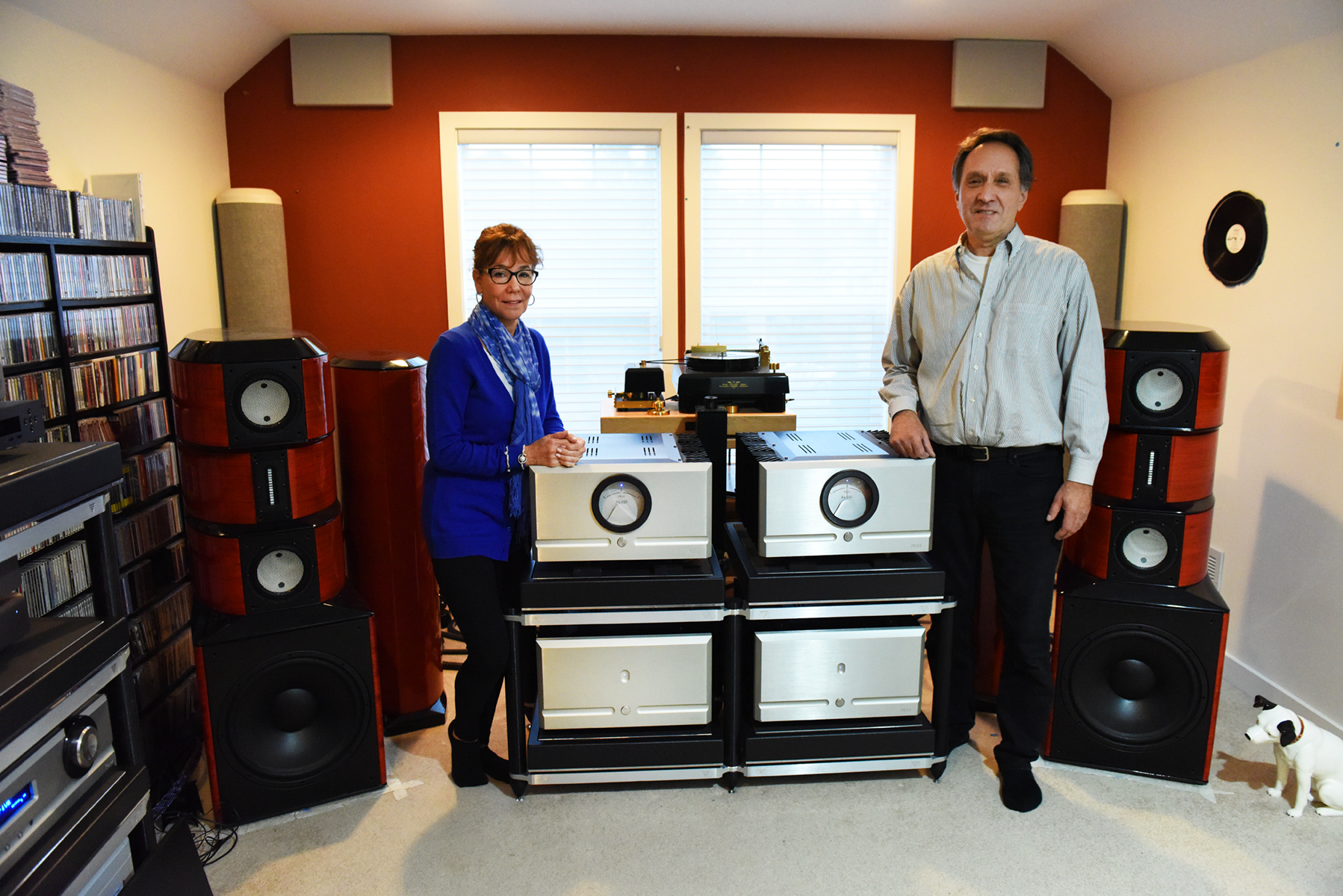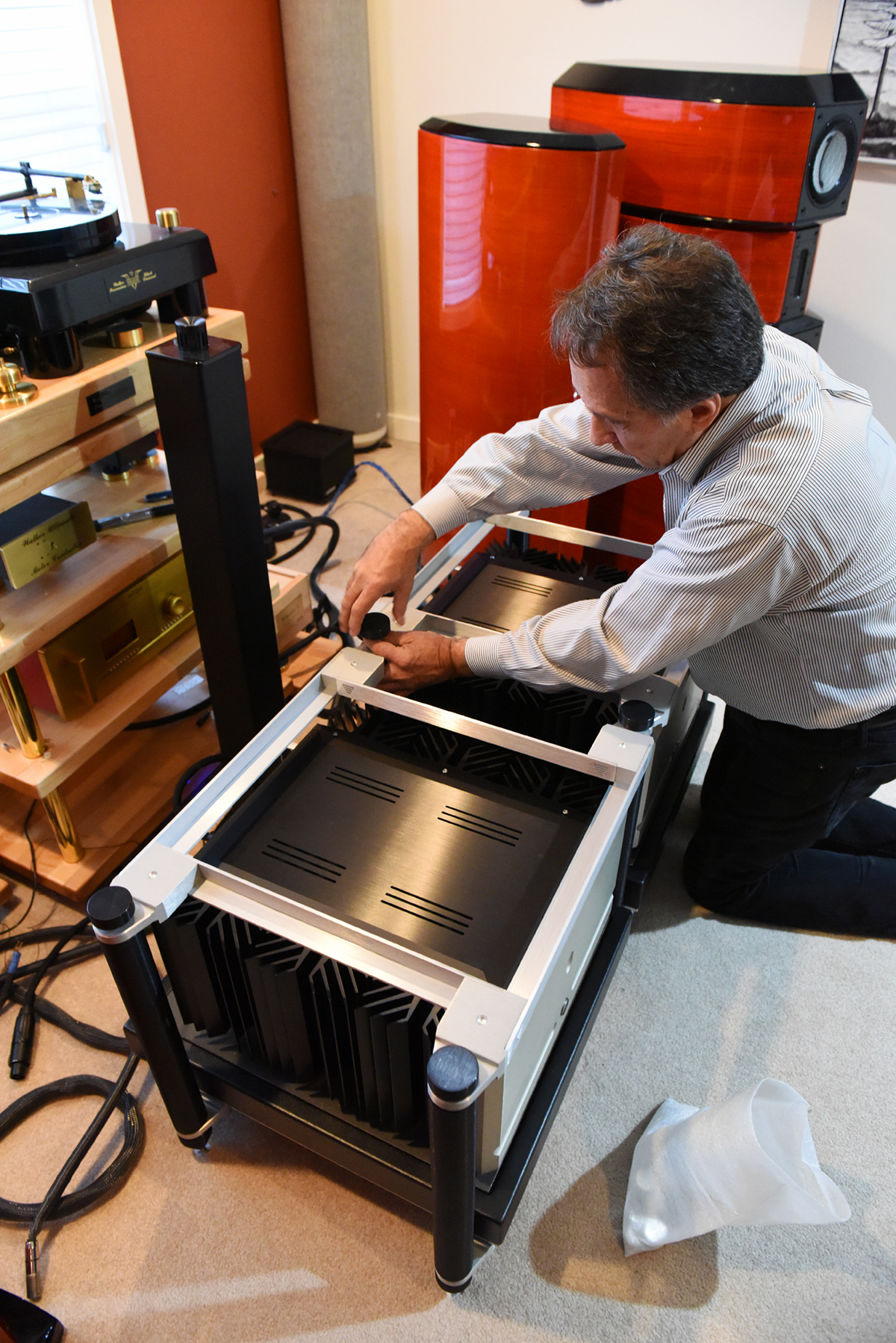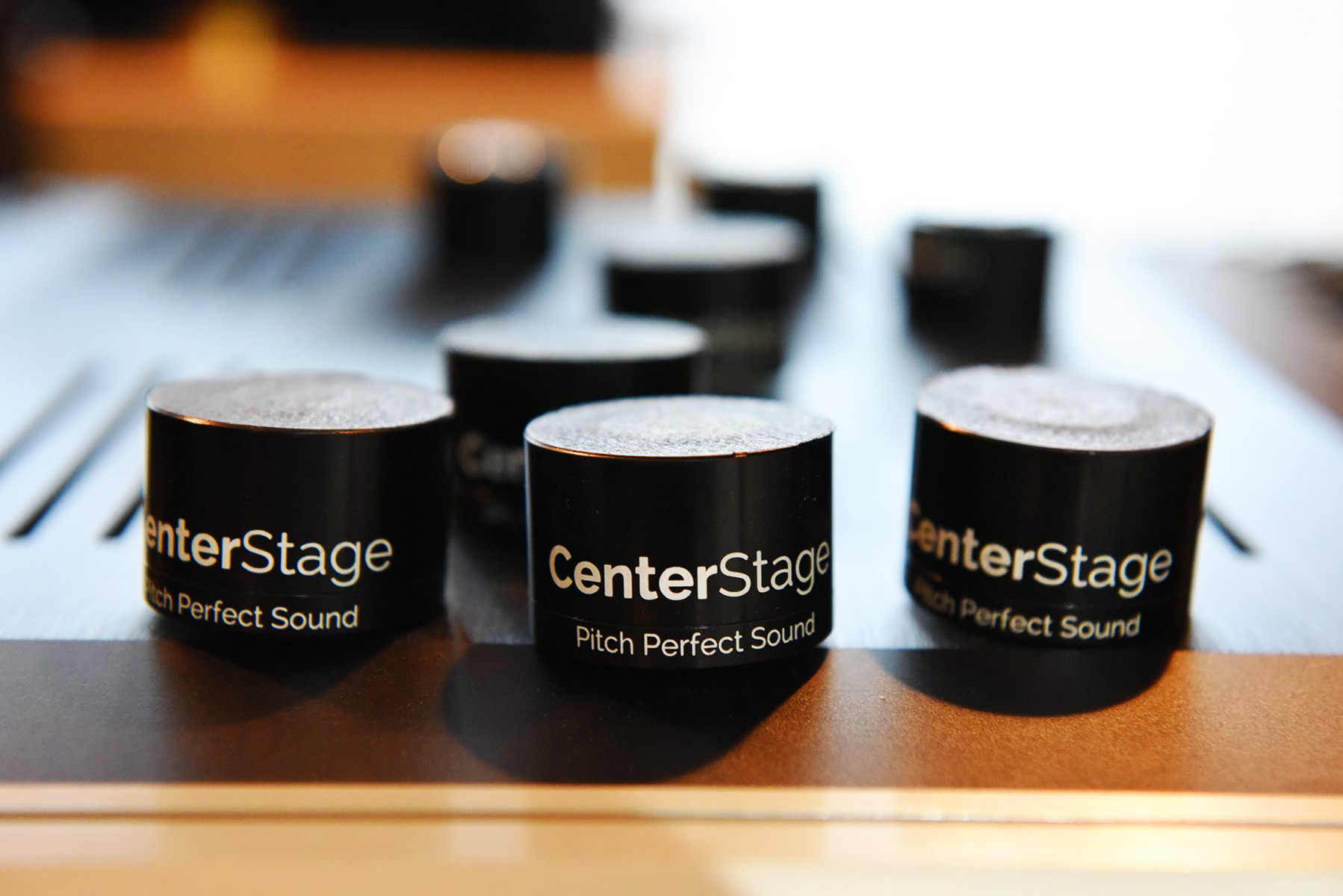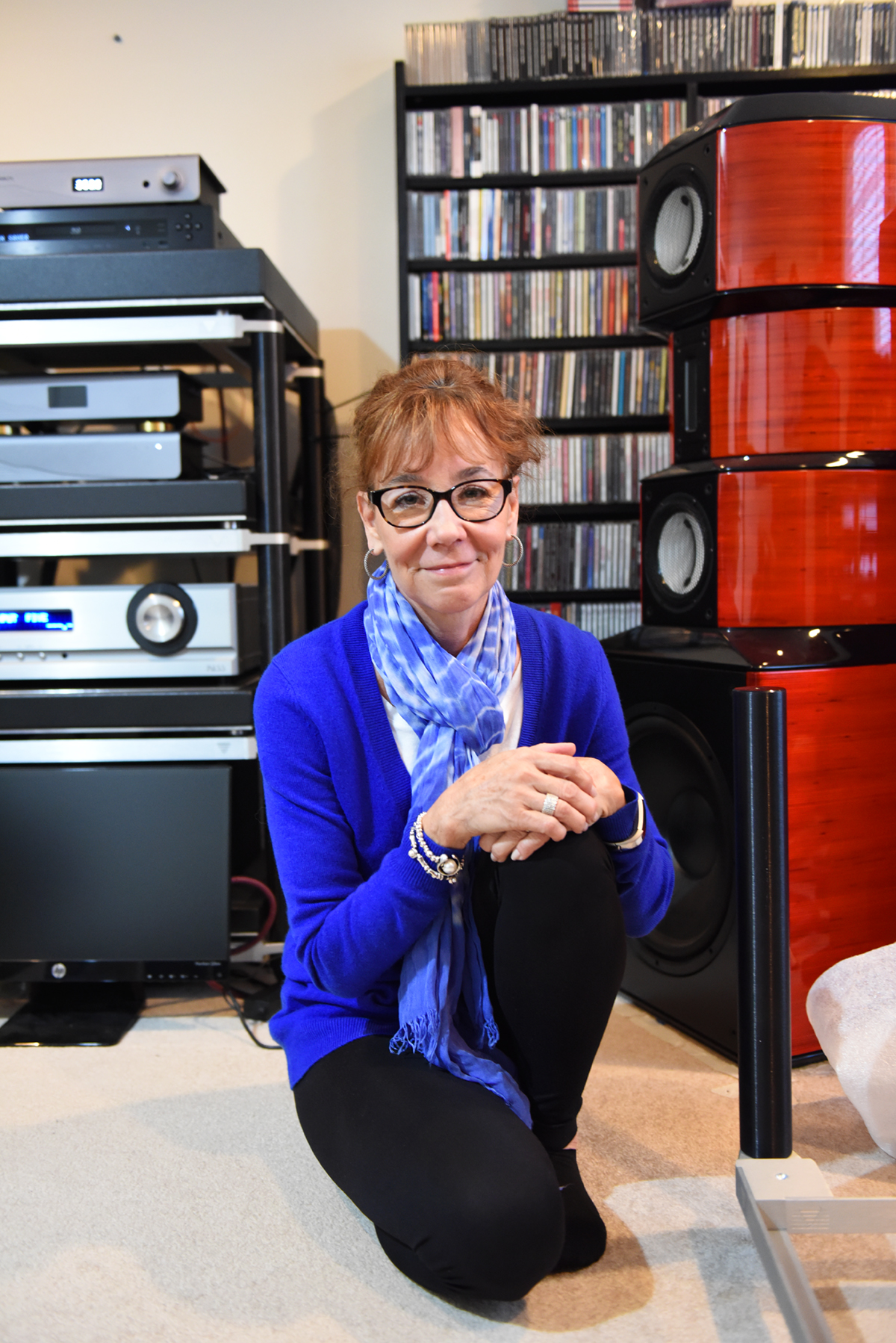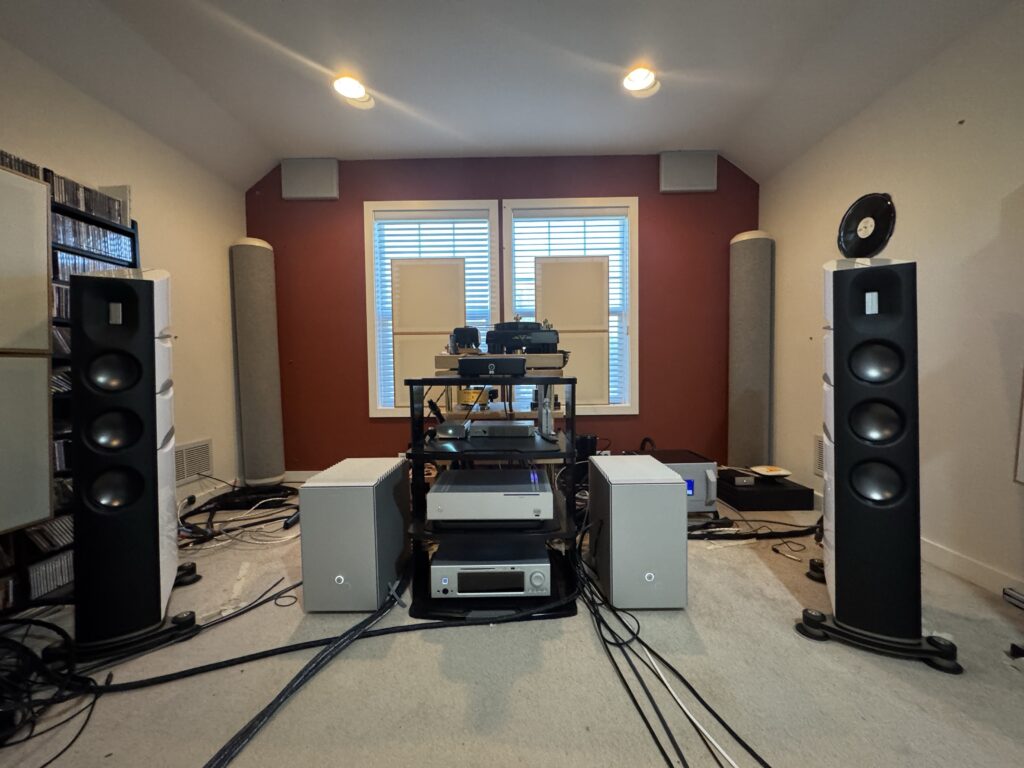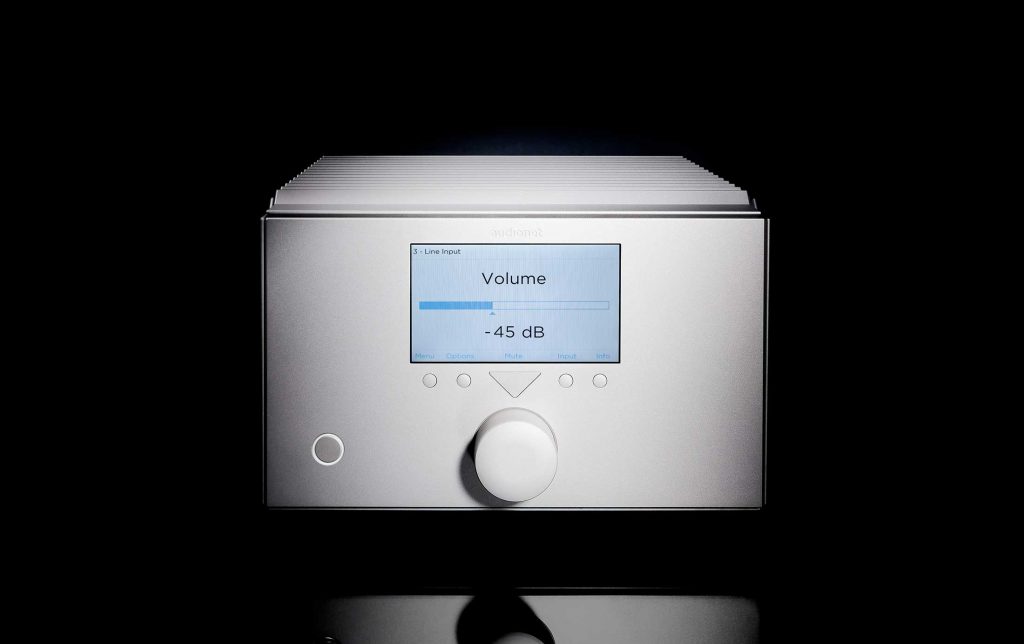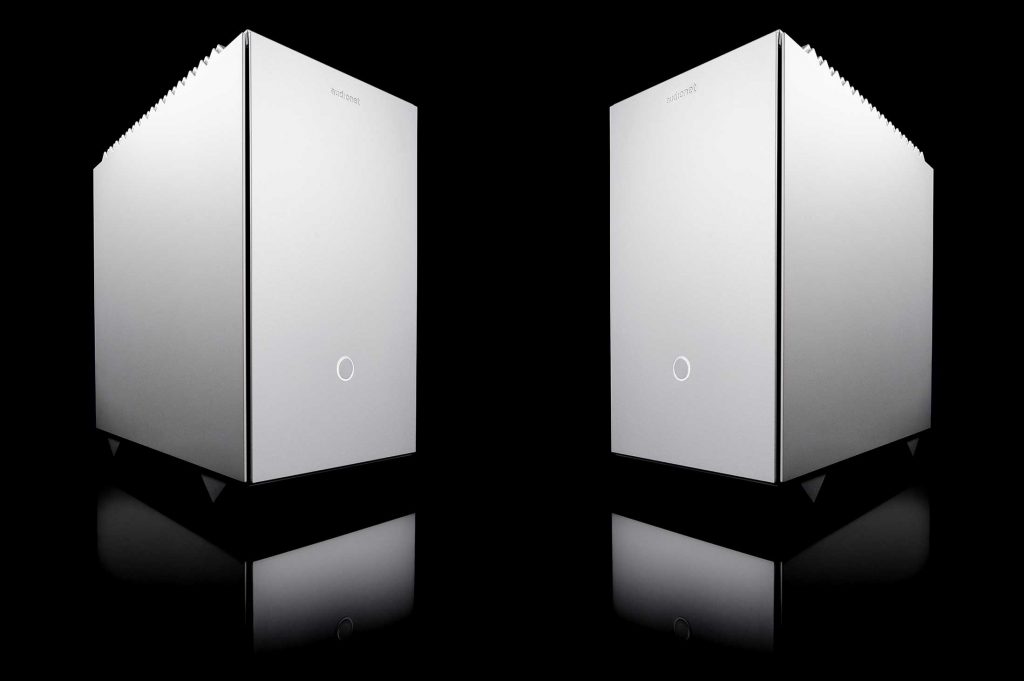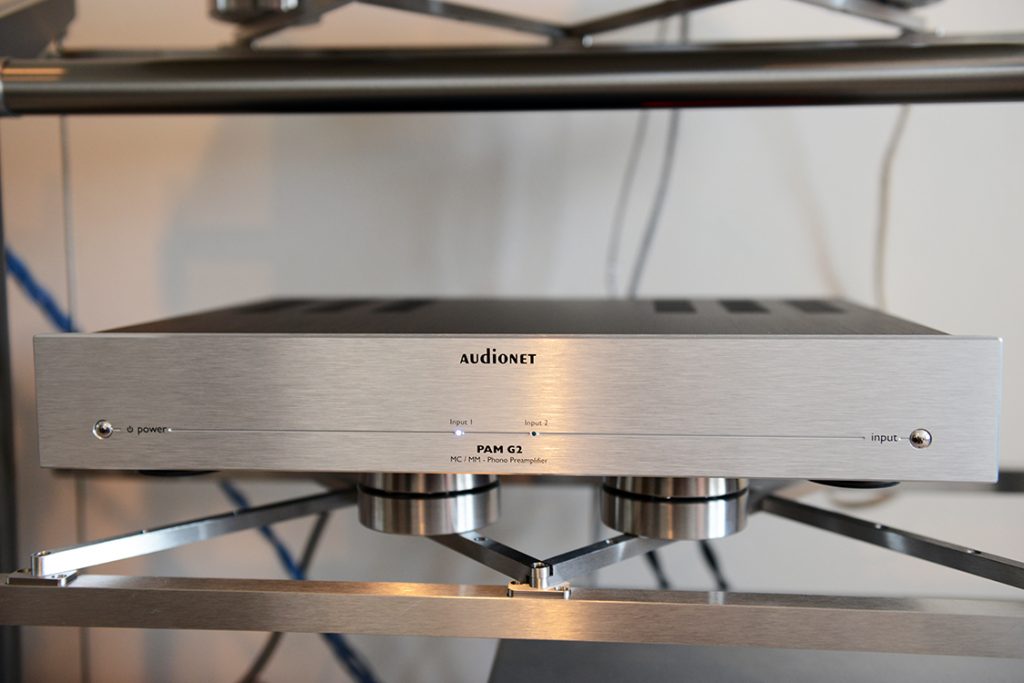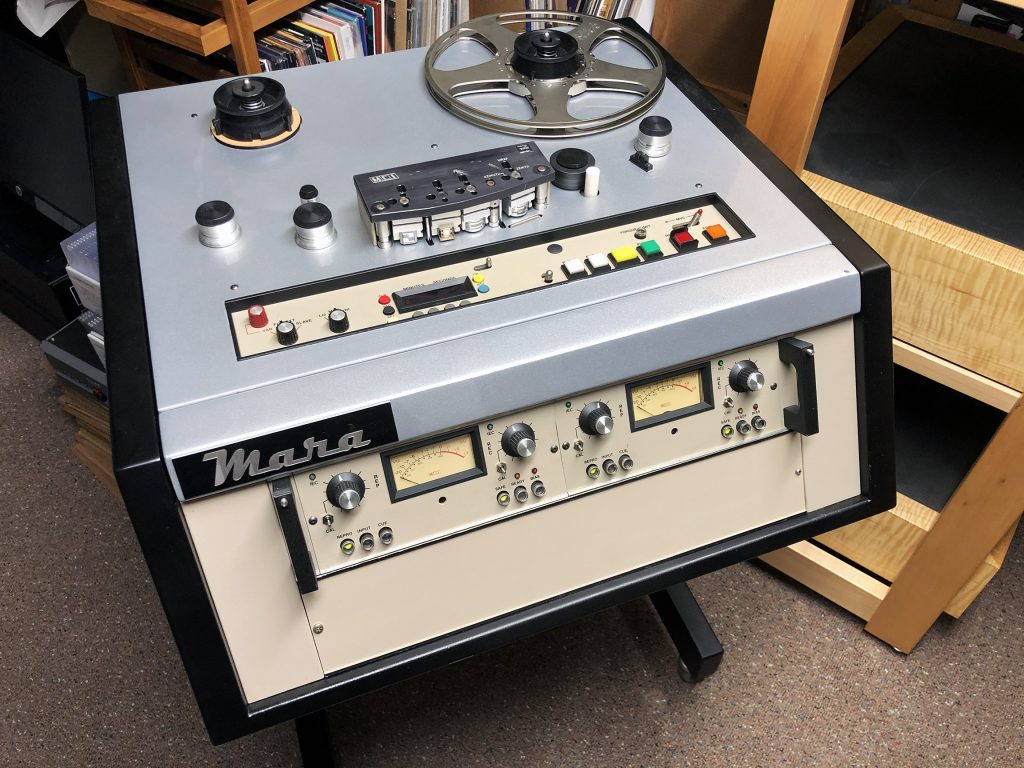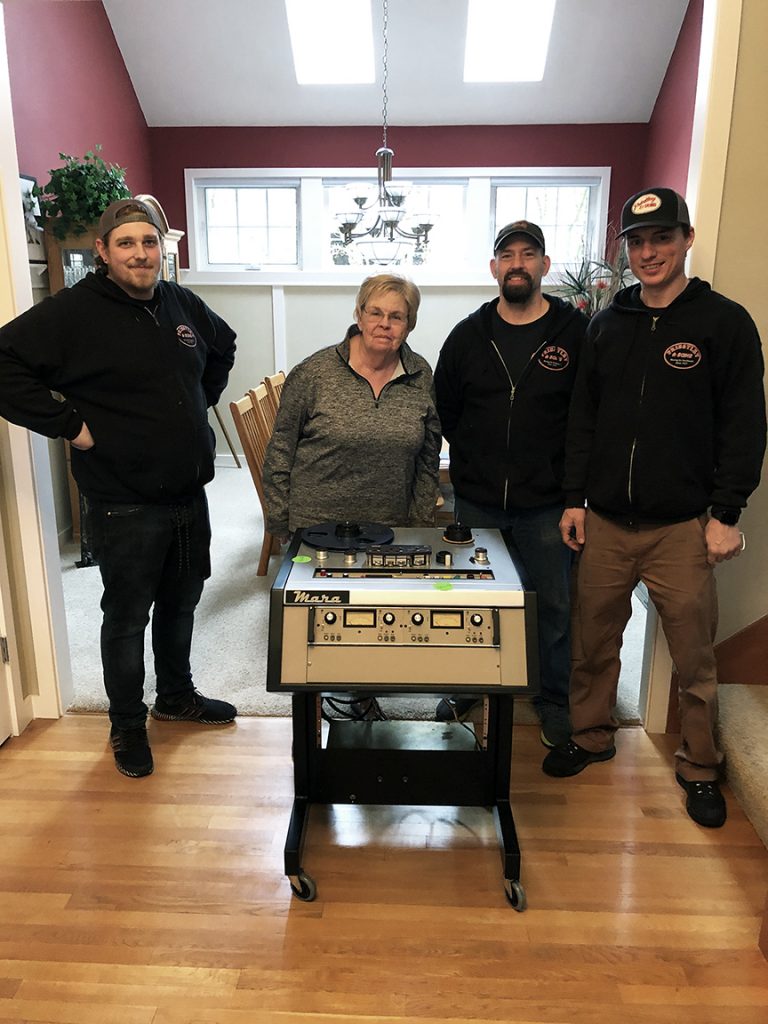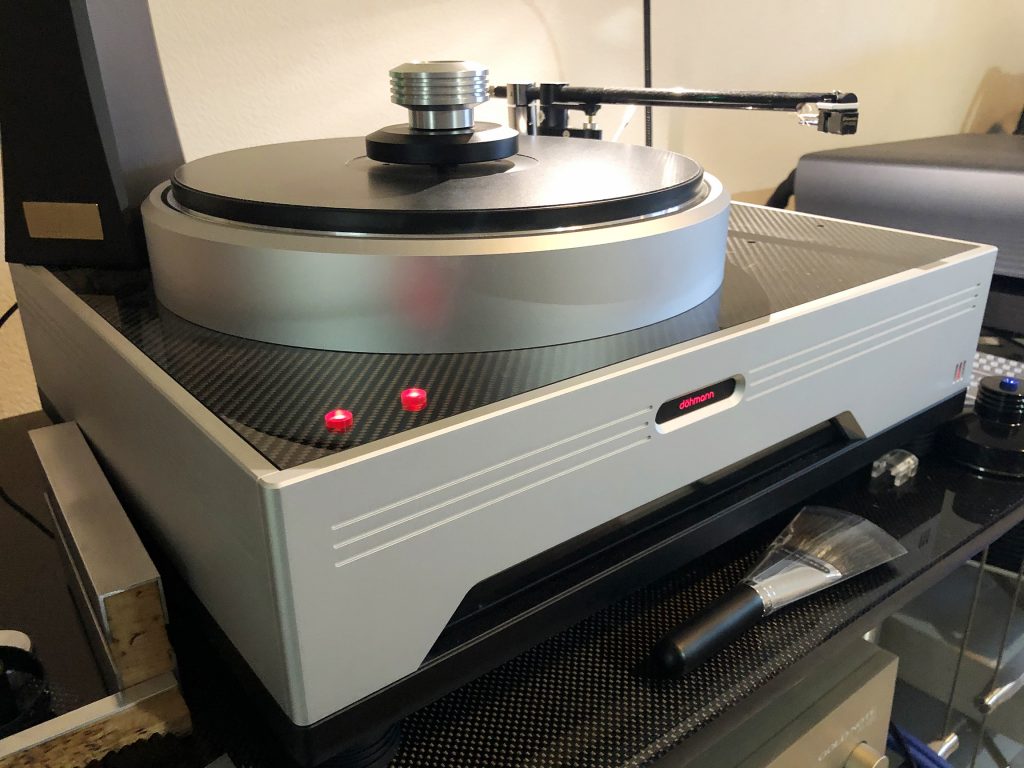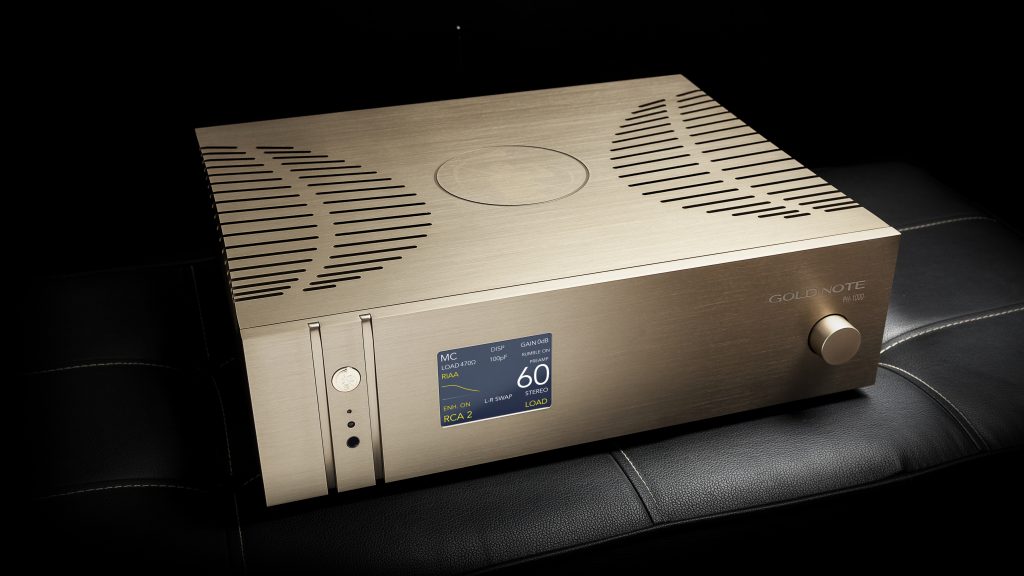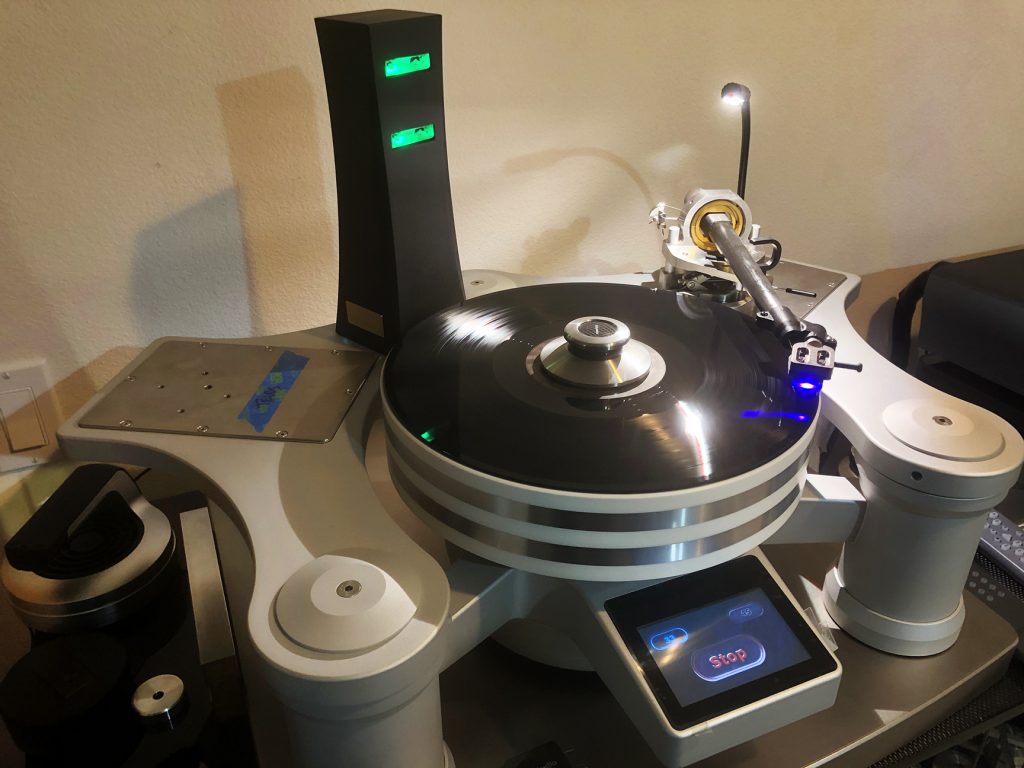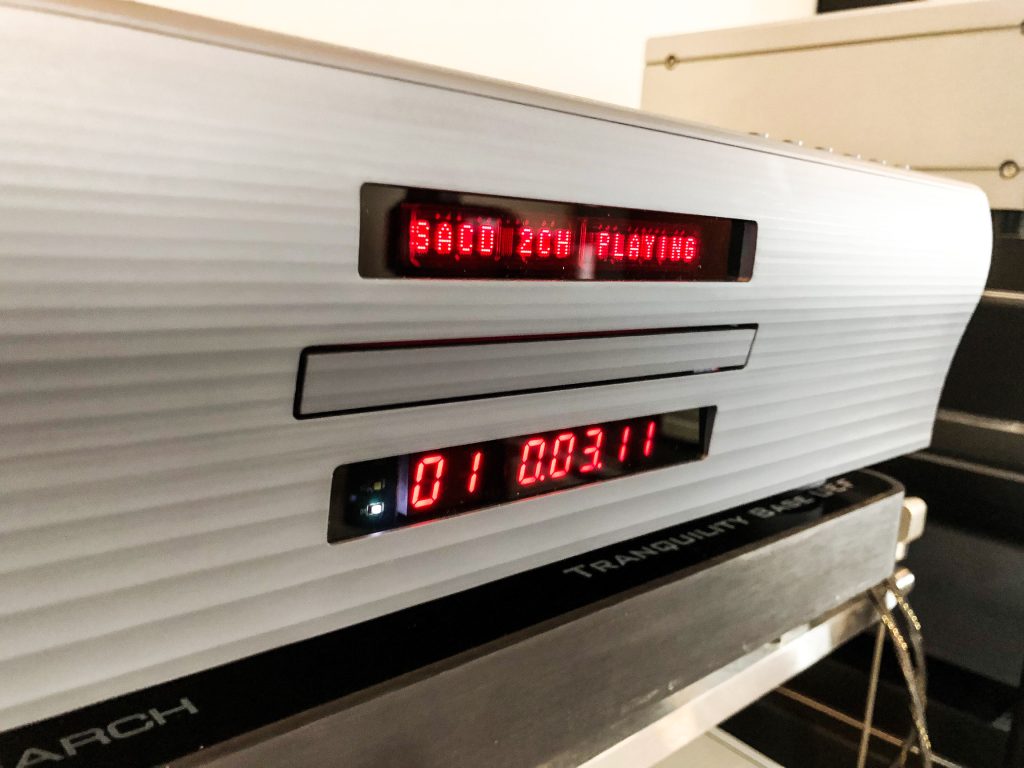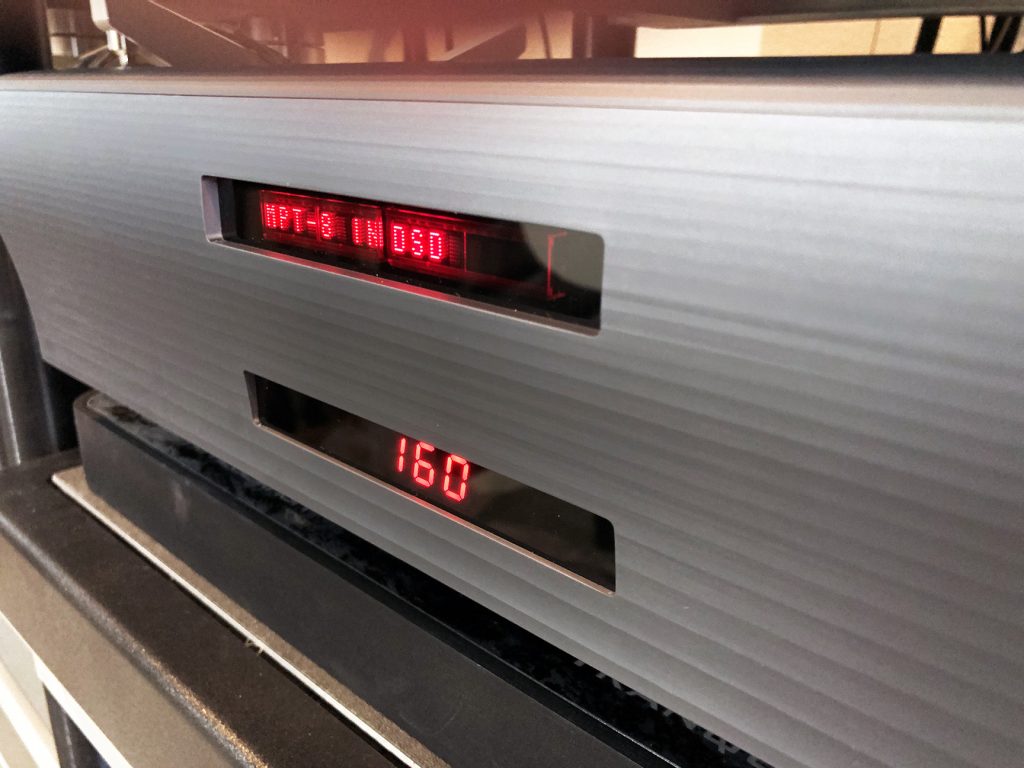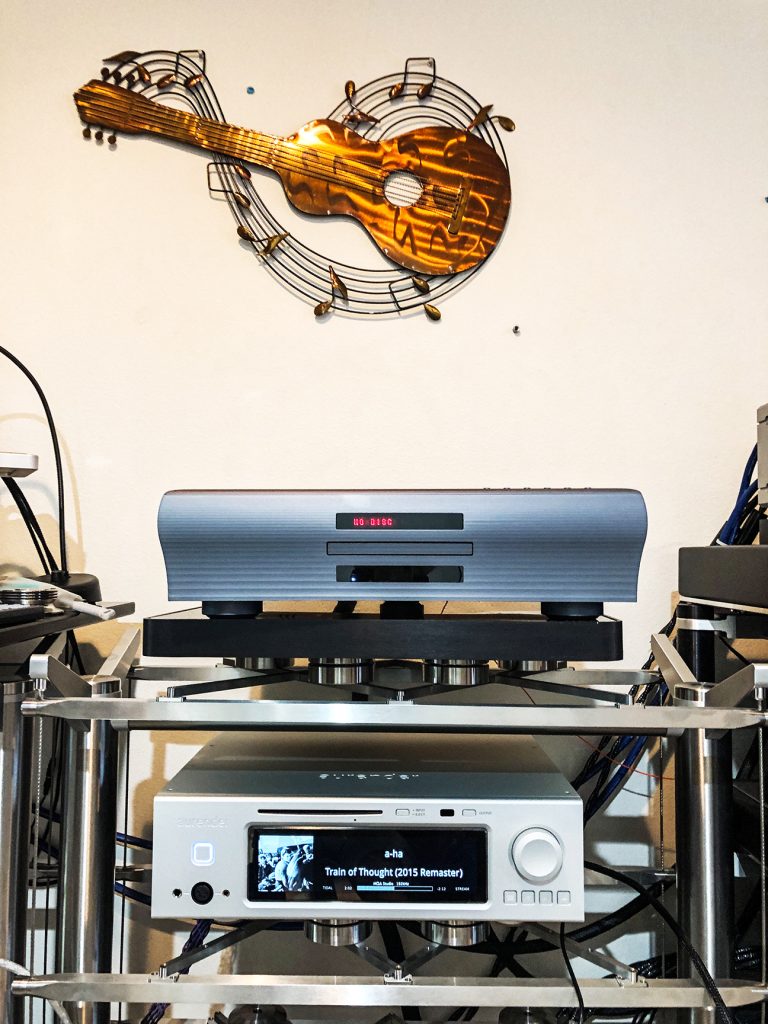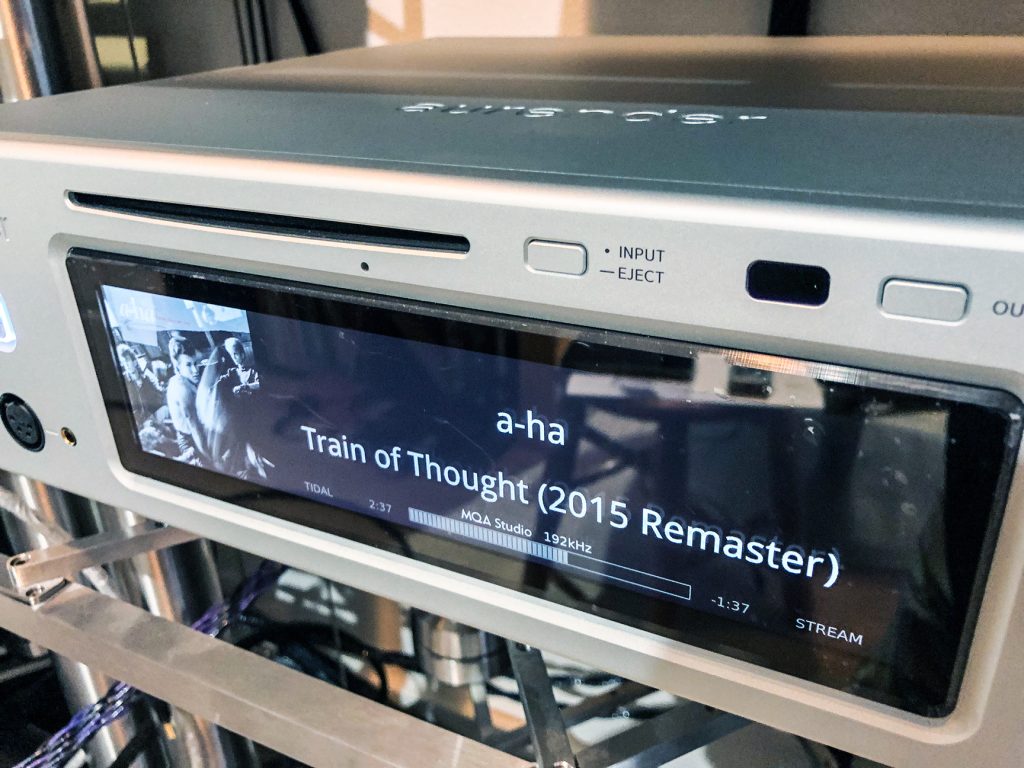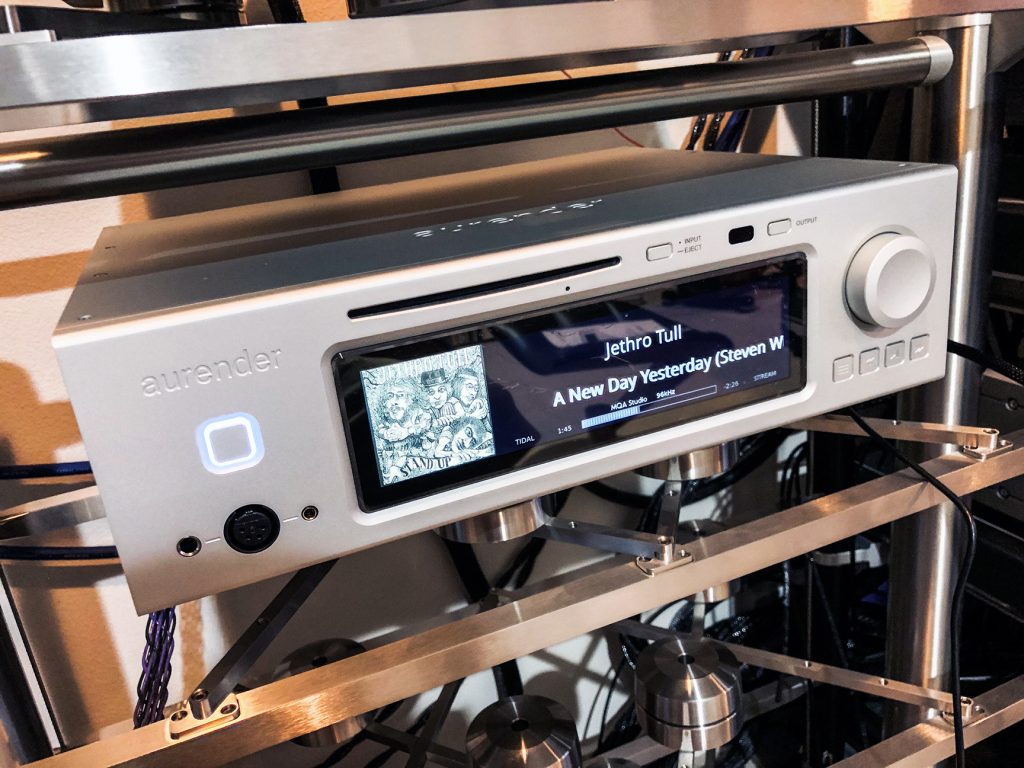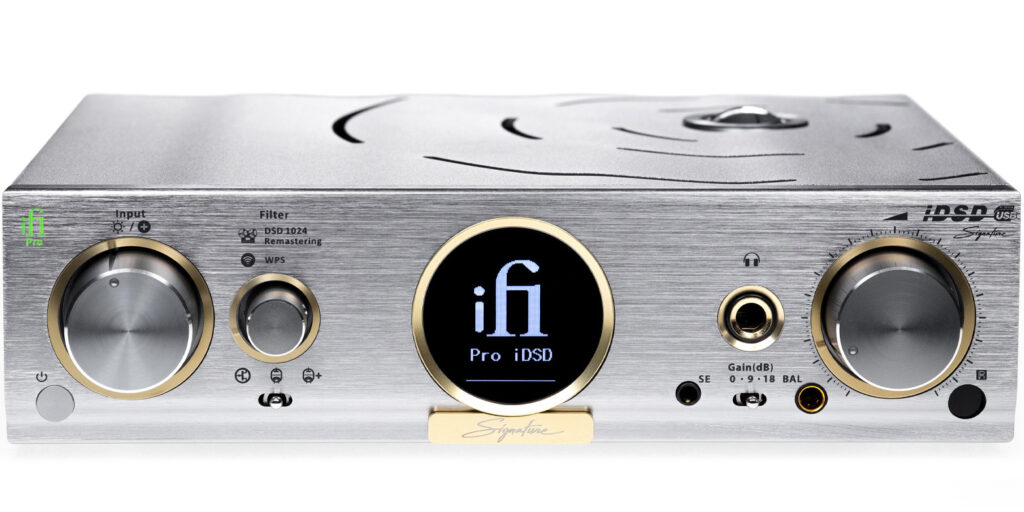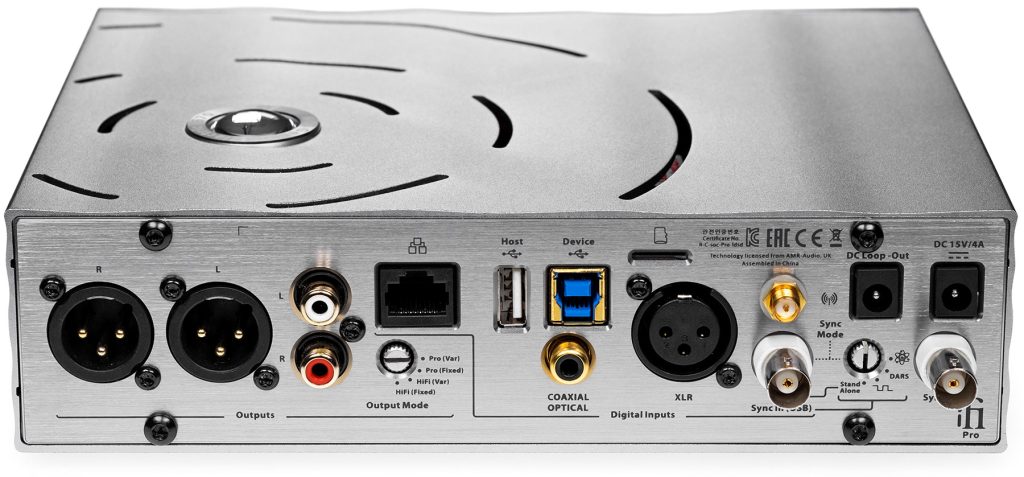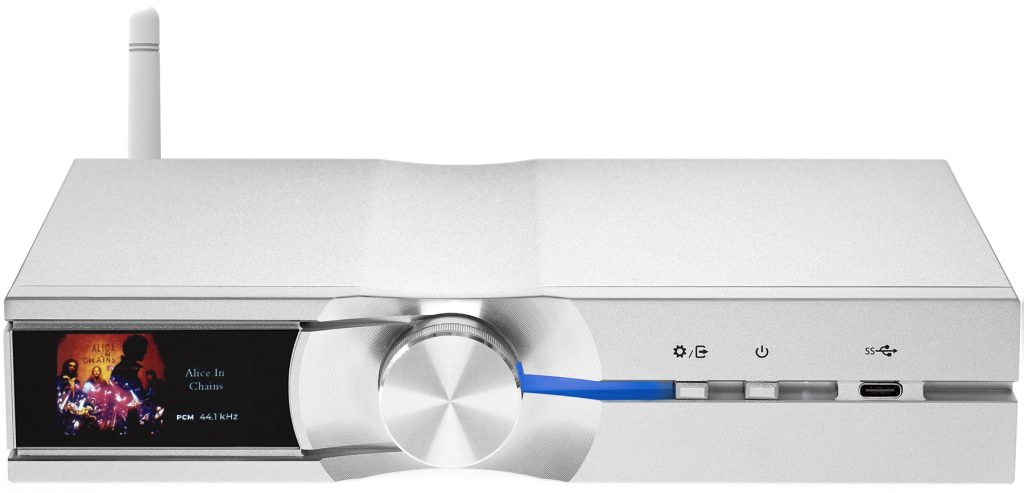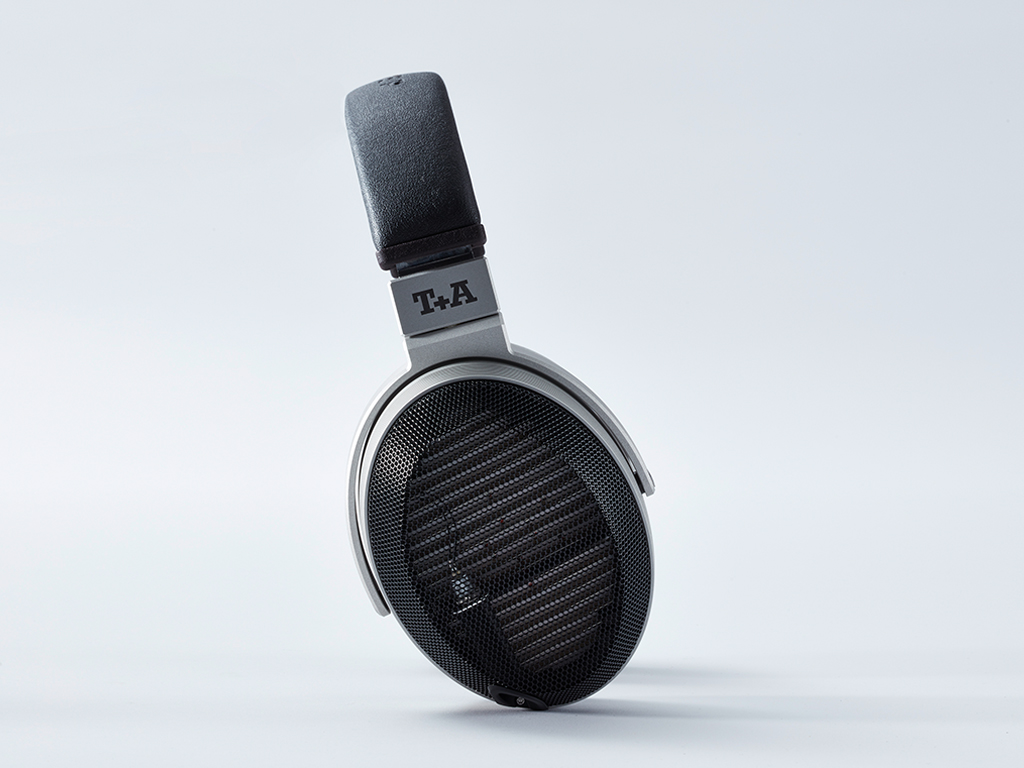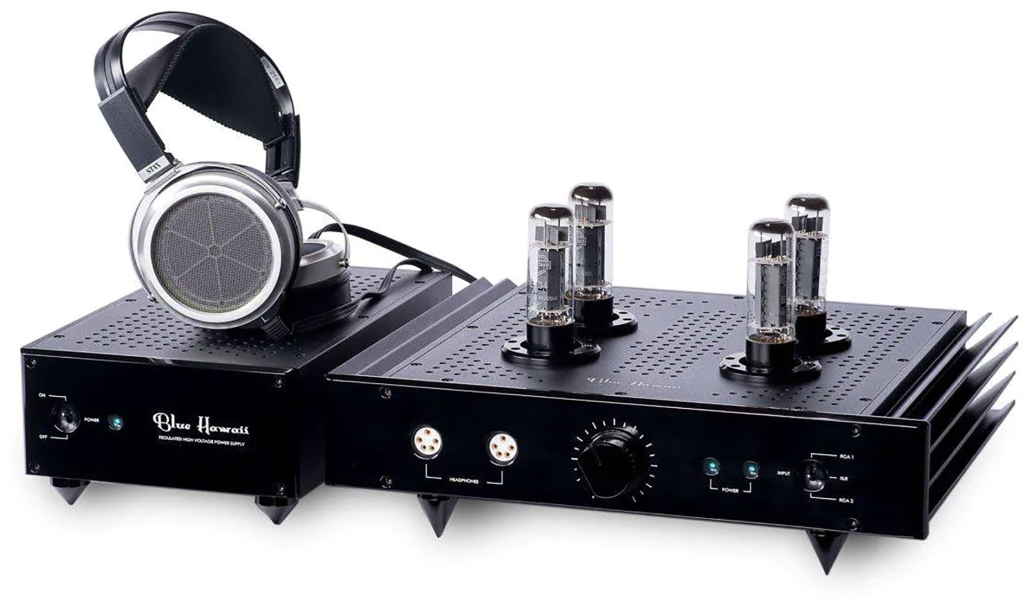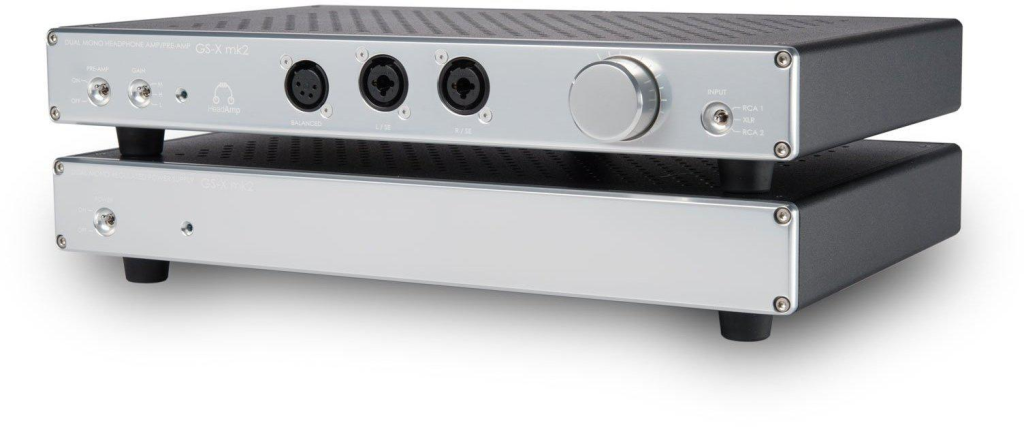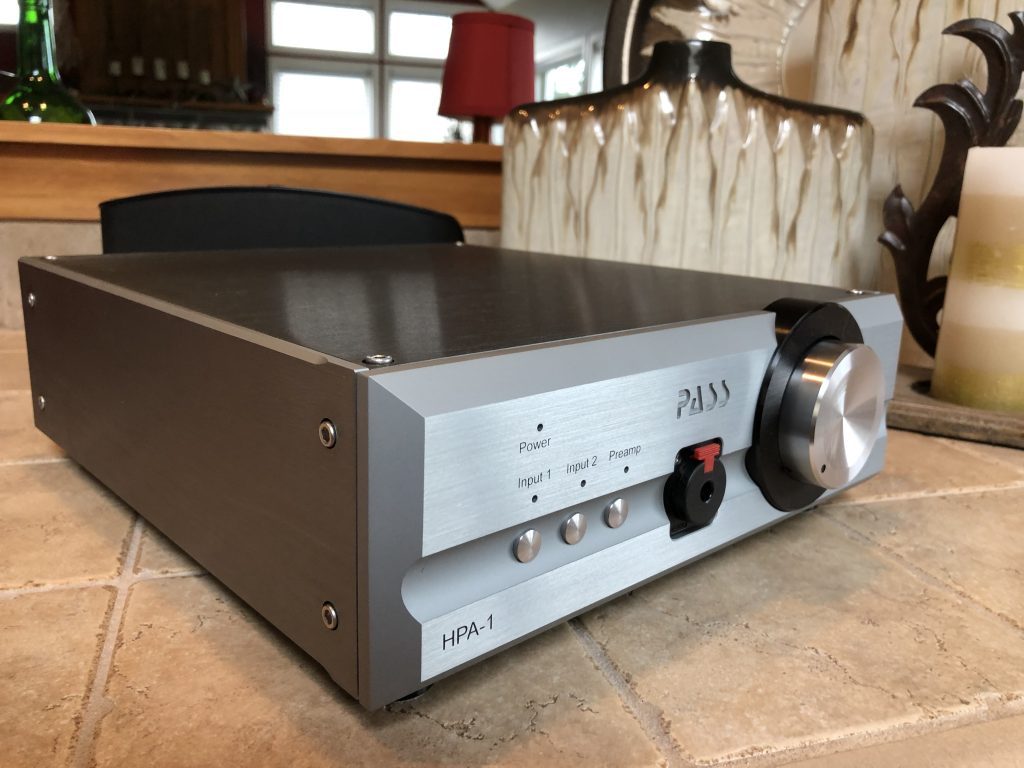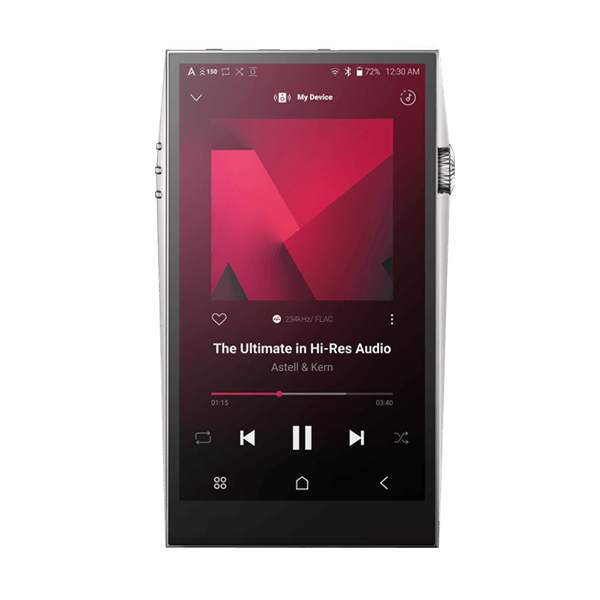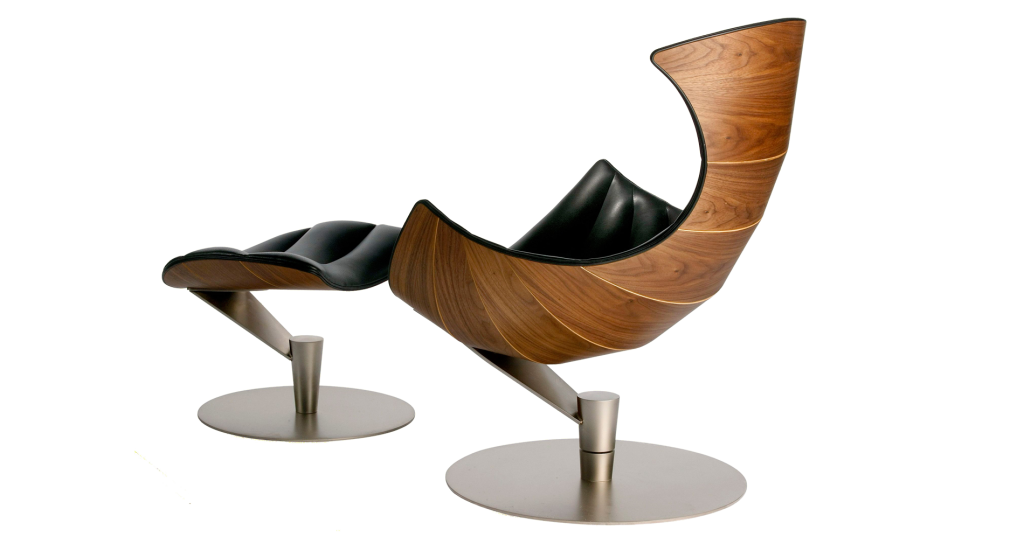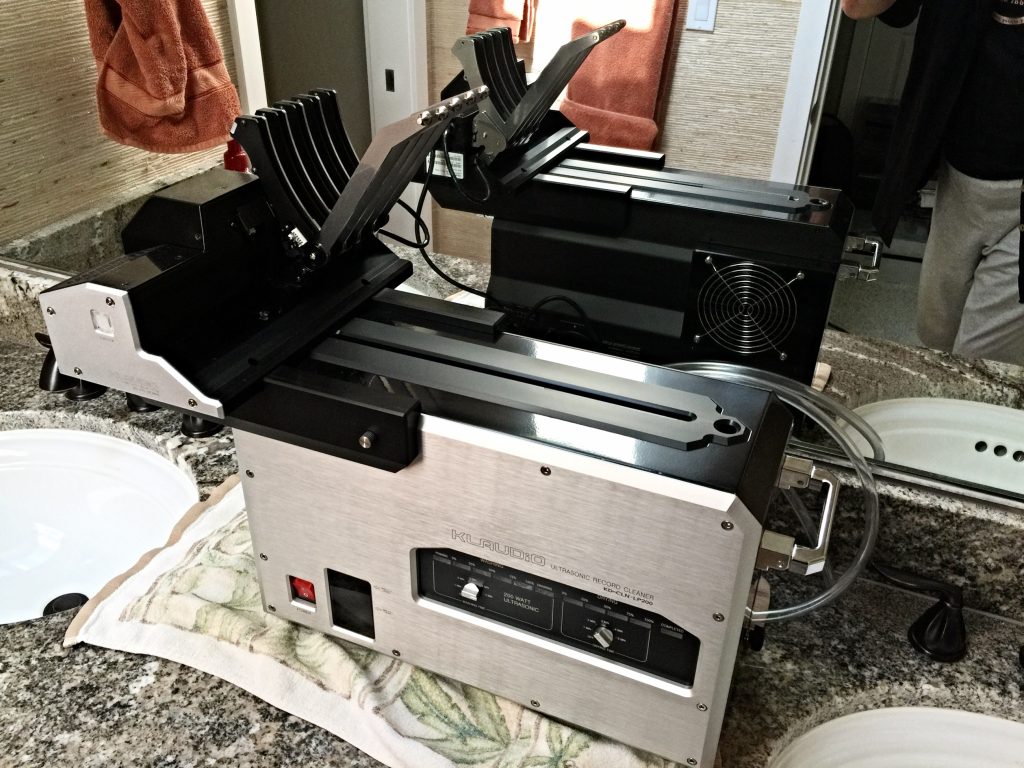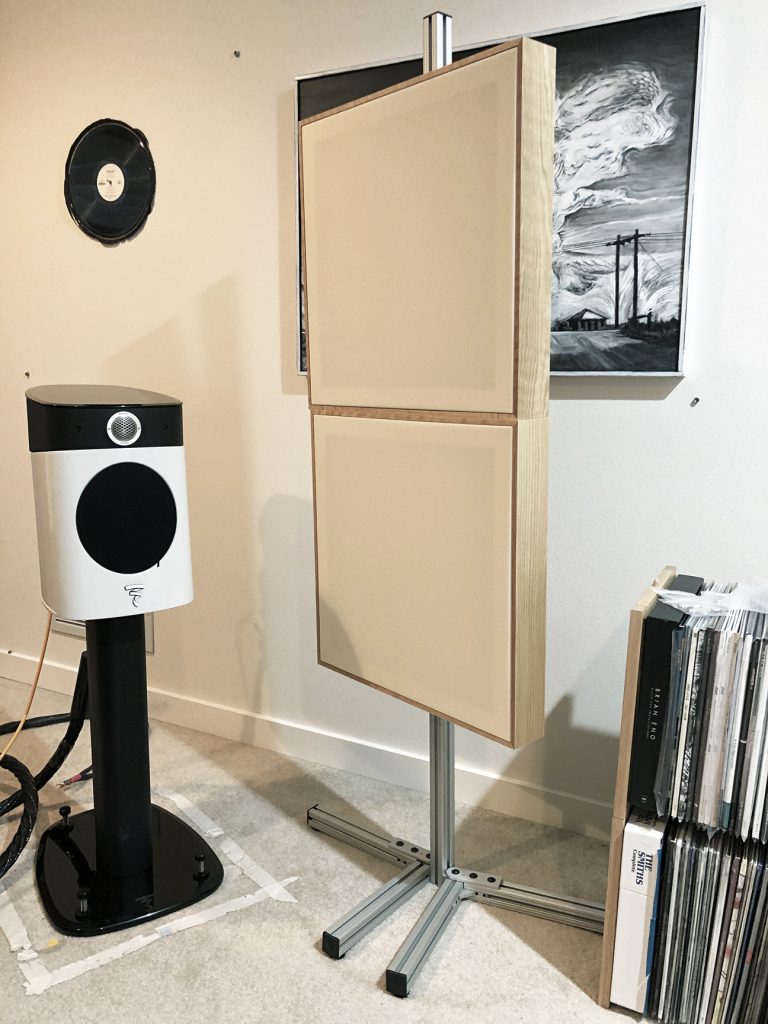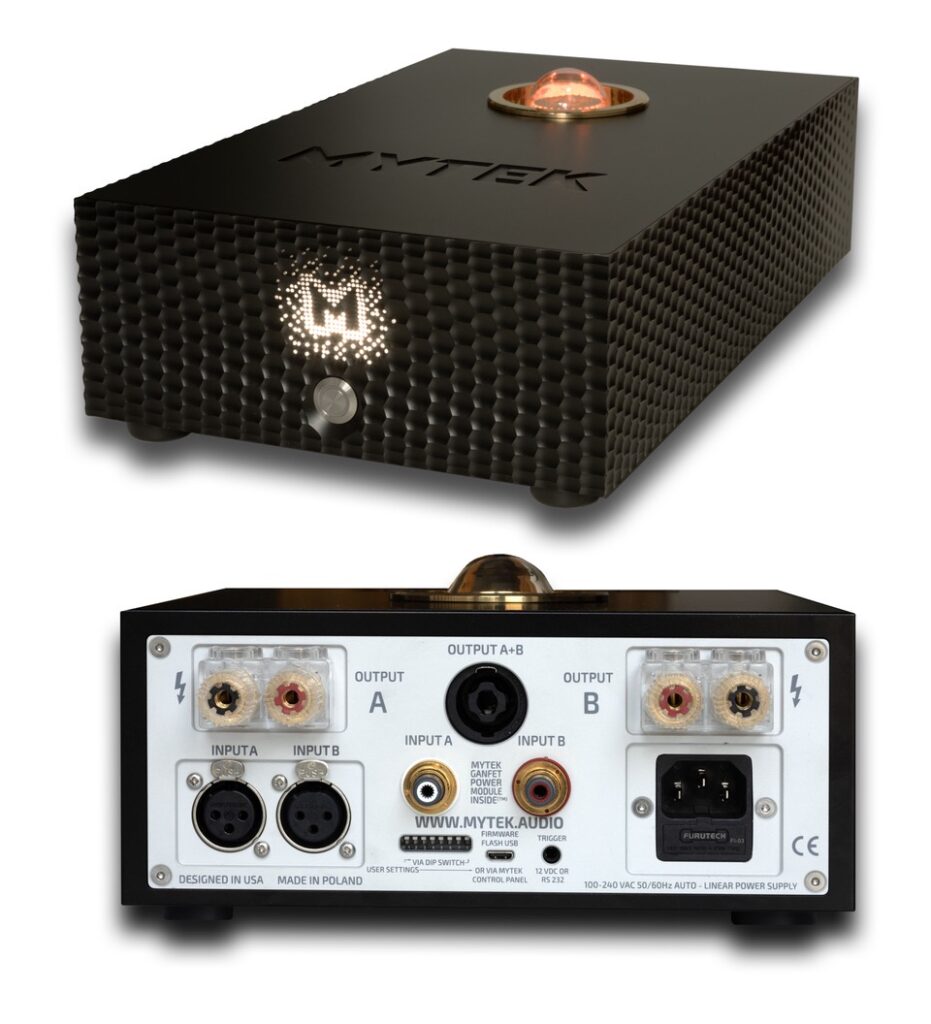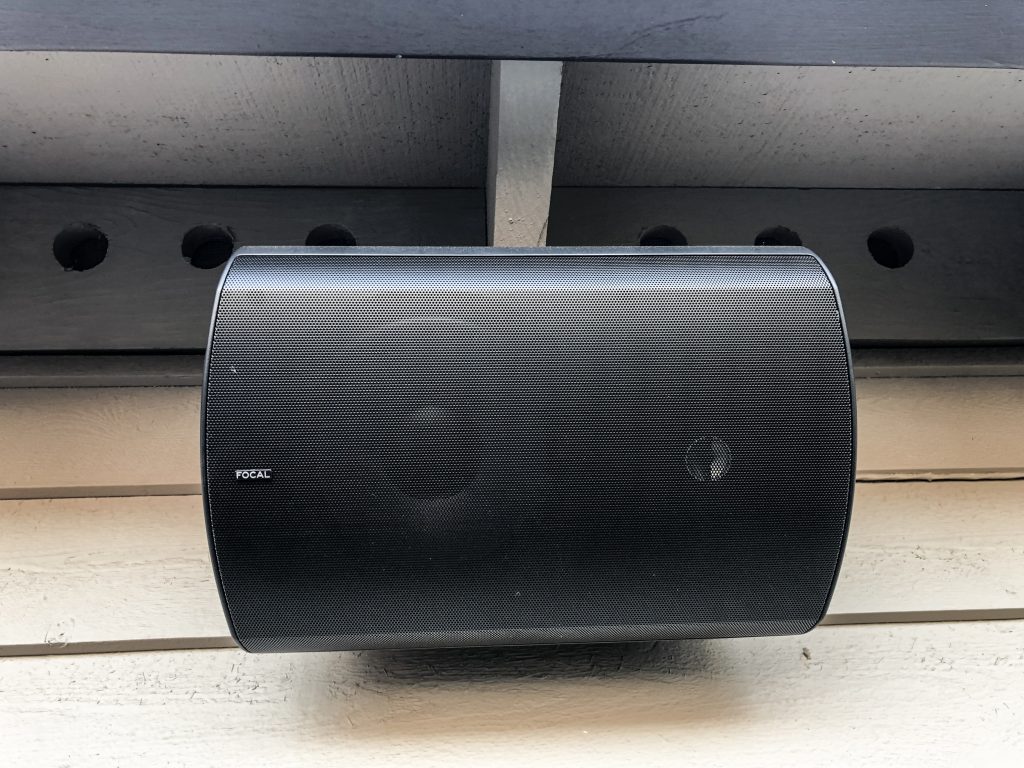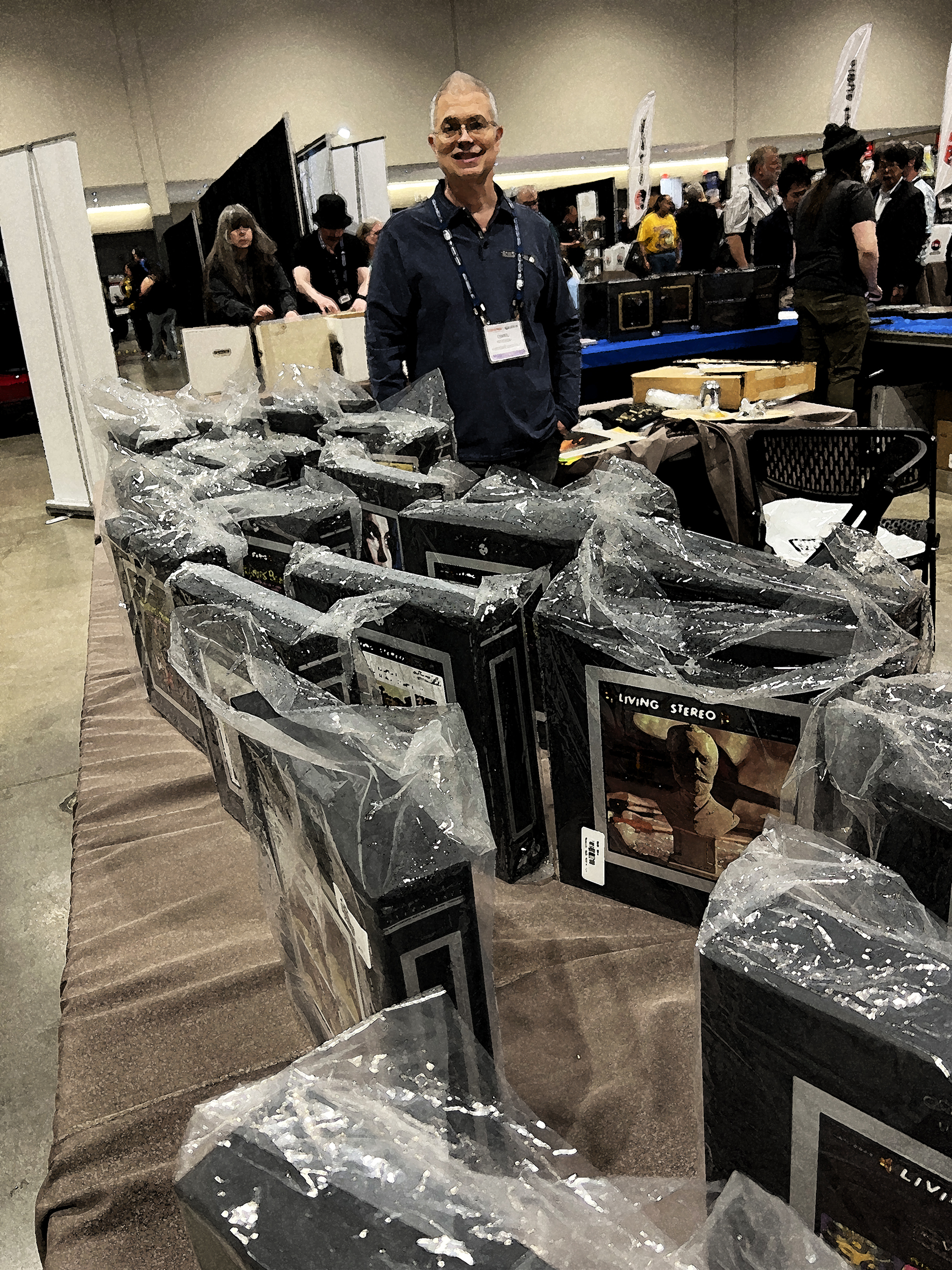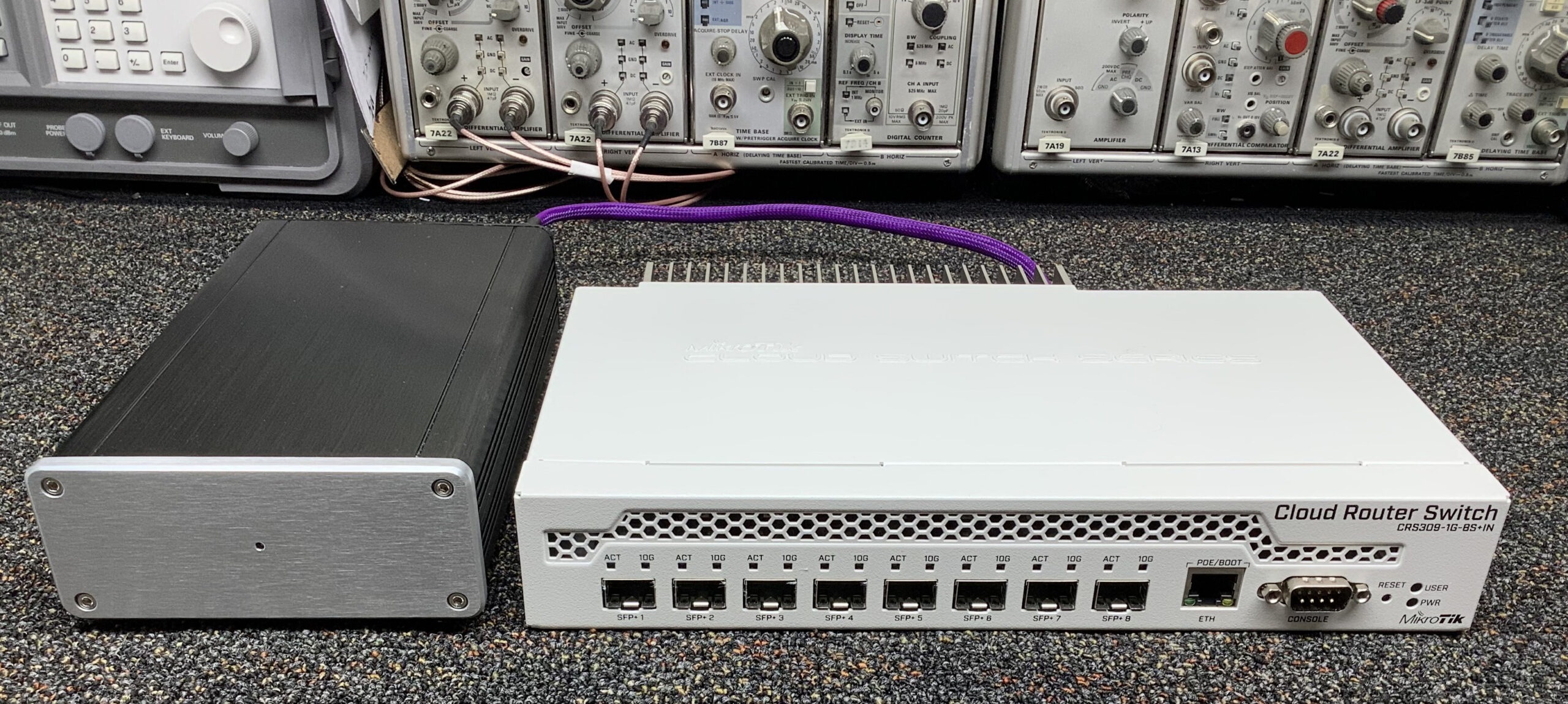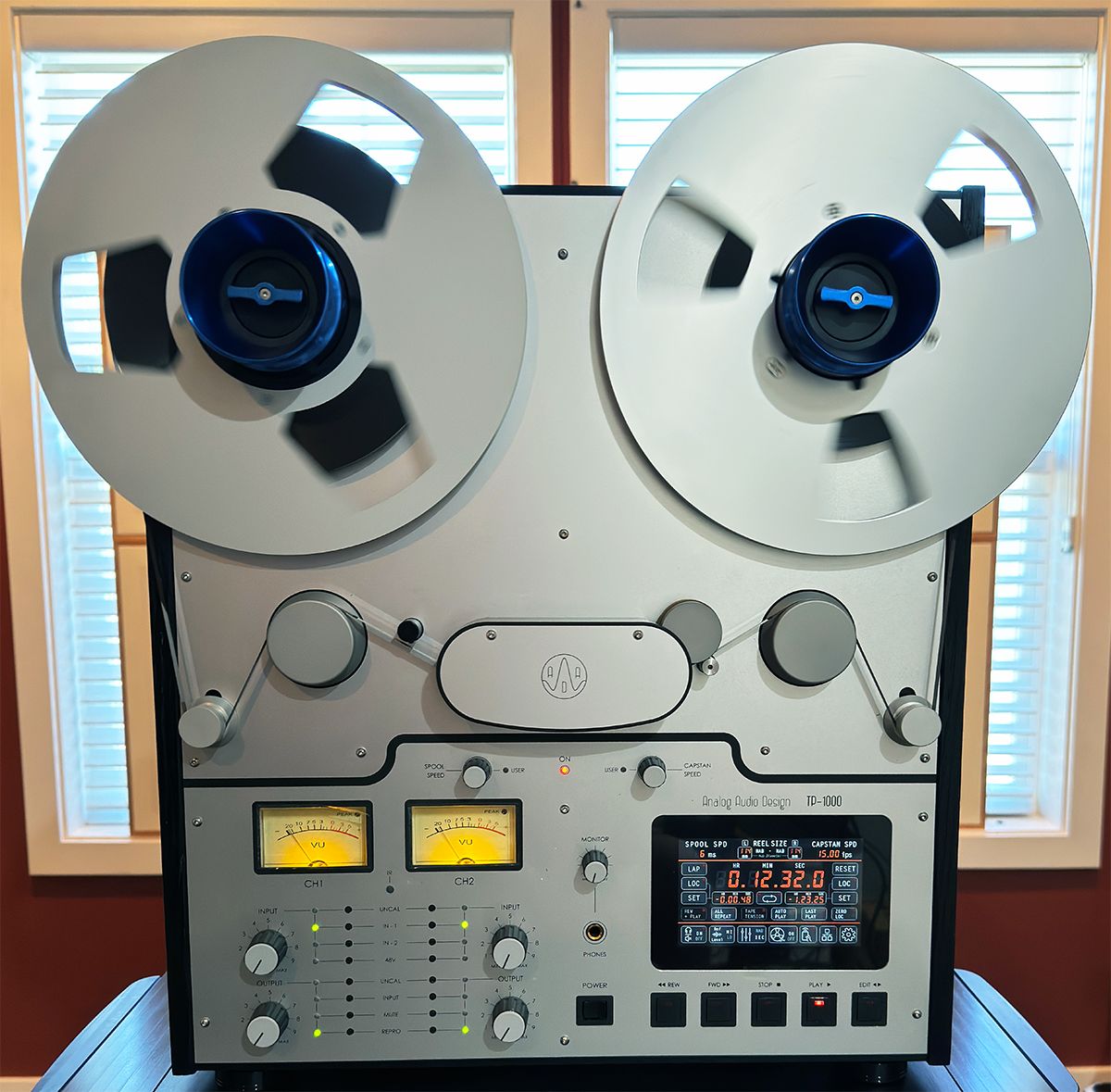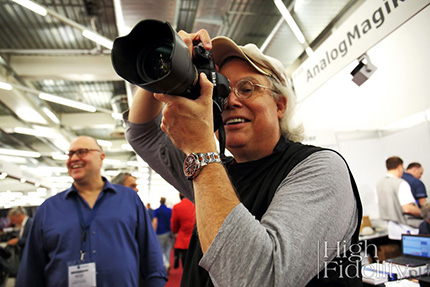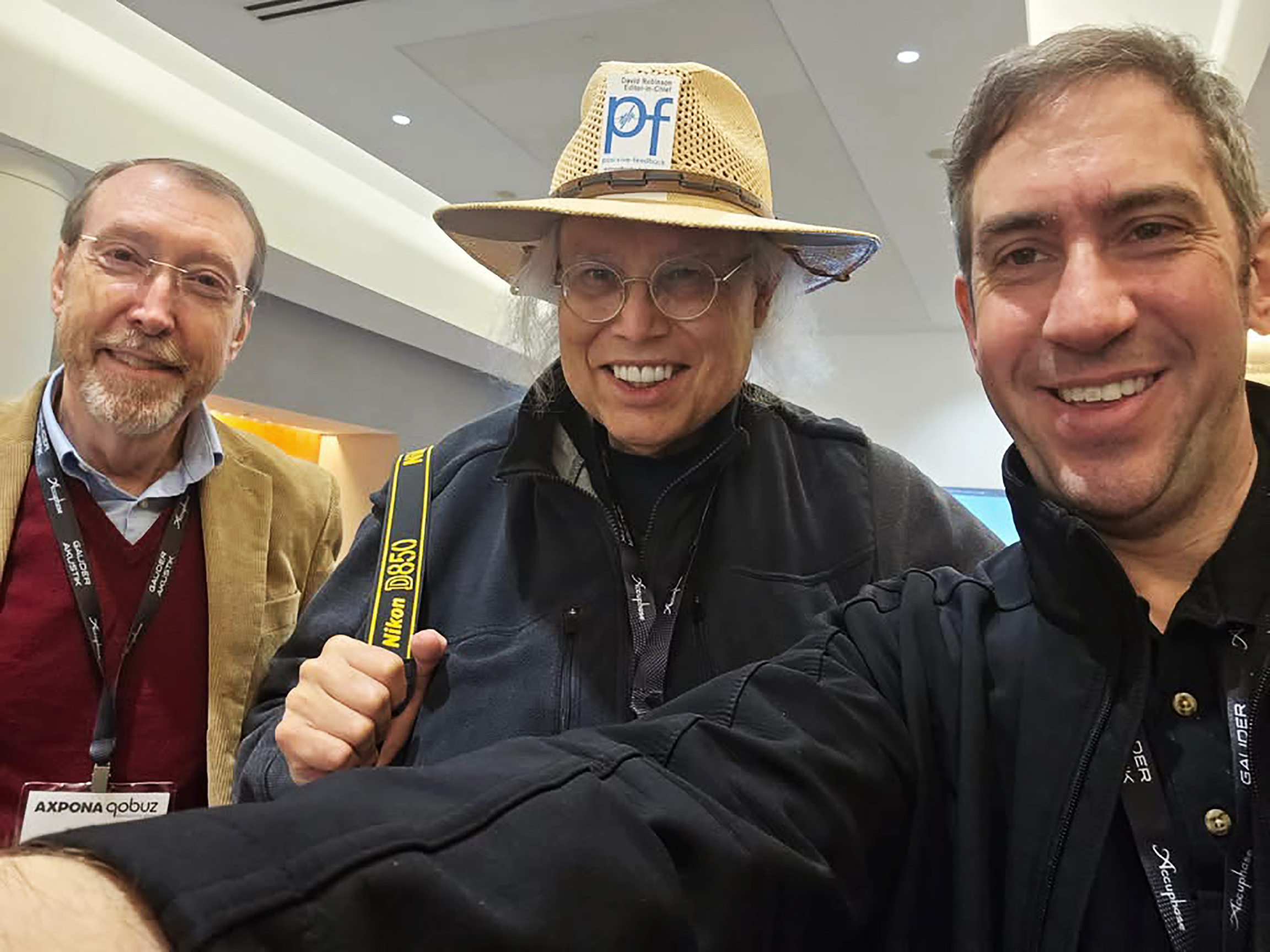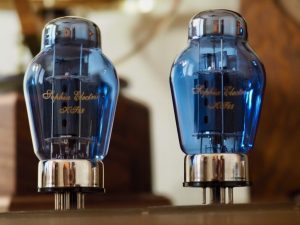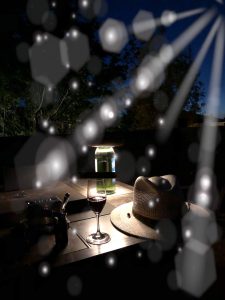So soon! Another year, another time to announce my Brutus Awards for 2017. Every year seems to go by faster, and this year was no exception.
As longtime readers know, I instituted the Positive Feedback Brutus Awards way back in the mists of time…yonder in 2003. And every year, for the new readers who have joined us, I review the parameters of the Brutus Awards, so that everyone knows what they mean, and what guidelines direct Dave Clark and my choices.
As I said in 2016: "At the end of each year, my unindicted co-conspirator Dave Clark and I give our Positive Feedback awards. These are our annual "best stuff we heard this year" plaudits. No padding, crap, junk food, or meaningless drivel here: Just the righteous word!
As I said in Positive Feedback all the way back in Issue 10, December of 2003, when I announced the birth of the Brutus Award:
"We at Positive Feedback are going to have two main categories of annual awards. The first will be our Brutus Award. This will be recognition given to "the best and the brightest" products that we have experienced in various categories in a given year. In hardware, these will range from "best bang for the buck" to "the best period, and hang the expense!" designs. In recordings, we'll be paying tribute to the best that we've found in various formats. In addition, we'll have a "Lifetime Achievement Award" that will recognize individuals whose contributions to fine audio in various respects has been both superior and sustained.
All products that are so recognized by PF will be work that has been reviewed by us personally; no design will be recognized that we do not have experience with in our listening rooms. This means that you, our readers, may disagree with our selections, wondering why this or that component, recording or individual was not mentioned. Quite apart from differences in taste/opinion, the answer is simple: we won't be mentioning any design that we haven't spent time with in our own listening rooms. If a product does not win a Brutus Award in a given category, this does not signify lack of merit—we just may not have gotten to work with it. You're certainly welcome to write to us and bring worthy components to our attention."
So now you know it: That's what's behind Dave Clark's and my Brutus Awards over the past fourteen years now. The products that we commend in our Brutus Award awards…together with our creative community's Writers' Choice Awards, published separately…represent our take on "the best we've heard in our own listening rooms this year." I have separate show recognitions, which are my Audio Oasis! Awards, which recognize the best of what I hear while attending audio shows. These last are published throughout the year, in reasonable proximity to the shows themselves.
Additionally, I do award our PF Gizmo Audio Award, for the designer I've noticed who has demonstrated true audiomania in the quality and depth of passion for advancing the audio arts. We've had some great names in the past (hi, Lloyd Walker!), but I don't give this award every year. If nobody strikes me as an audiomaniac, then nobody gets one that year. This year you may well see more than one winner…keep reading!
This is also the season for our PF Circuitus Maximus Award, which recognizes systems that exhibit superior audio synergy in my room. This award is also not given every year, but this year is different, I'm glad to say.
Finally, we have a PF Lifetime Achievement Award, wherein I honor persons who have produced a longtime body of work in the audio arts that ought to be highlighted. We've had some fine names there in the past…for example, George Cardas, Winston Ma, Chad Kassem, Stan Ricker…and we'll add to the list this year, as well.
The list for this year, in no particular order or ranking...
PASS Labs Xs Phono Amp, Xs Preamp, and Xs 150 Monoblock Amps
The PASS Labs Xs system in place, phase one…
Last year I singled out the PASS Labs INT-250 integrated amplifier for praise. This year, however, PASS Labs was kind enough to send their complete Xs reference line of components to me: the Xs Phono Amp, the Xs Preamp, and and a pair of the Xs 150 Monoblock Amps.
All are two-box designs, with separate, very substantial power supplies. The Xs Phono arrived first, with the preamp and monoblocks arriving a few months later. Their specifications are pretty mind-blowing; you can check out the Xs Phono and Xs Preamp HERE. The skinny on the Xs 150 Monos are over THERE. (Note that there is an Xs 300 model available, as well.)
I can cut to the chase here: The PASS Labs Xs line is one of the very finest sets of audio components that I've ever had in my listening room. And that's a very short list: darTZeel, Audionet, MBL, BAT…and now PASS Labs.
The glorious Xs Phono Amp…truly killer!
If you're looking for real state-of-the-art in phono amps, you'll definitely find it here. The Xs Phono Amp is absolutely killer! Talk about flexible: It supports up to three phono inputs, MC or MM, with three knobs up front to control resistive loading (30 ohms – 47k ohms), capacitive loading (100pF – 750pF), and gain (56dB, 66dB, and 76dB). Better yet, the three inputs are programmable. Once you've got the combination right for a given input, you can press "Save" to store the settings. You can do this for each input, and have instant parameter switching as you go from input to input. Excellent! And easy to use, too.
There are also buttons to control Mute and Hi-Pass filtering.
The external power supply does a great job of taking this dual mono design and keeping the juice clean and dynamic. In operation, the Xs Phono Amp is noise- and hum-free, and I've used it with three very different phono cartridges: The Grado Statement v2 MI, the Air Tight Opus 1 MC, and (at press time) the van den Hul Colibri Stradivarius Signature MC. These range in price from $3,500 (Grado) to $15,000 (Opus 1). In every case, after getting loading and gain right, the Xs Phono Amp delivered the goods, and allowed me to hear quite clearly into the character of each phono cartridge. The level of transparency with the Xs is so good that I would characterize it as a true Reference-Grade Reviewer's Component. To this point in time, I have not heard better than the Xs Phono Amp…and that covers about 30 years of audiophile experience now.
This package is a reviewer's dream, and an LP lover's delight! Frankly, I have come to rely on it as an essential Ye Olde Editor's instrument. I'll confess the addiction…I'm absolutely hooked on the Xs Phono Amp! It's not cheap, at $45,000 for the two-box setup, but this design delivers the goods with authority.
Want the best, most flexible phono amp that I've heard?
To this point in time, this is it.
And it…like the rest of the Xs line…is beautiful to look at, too.
The Xs Preamp on the third shelf down on the Critical Mass Systems QXK Rack
The Xs Preamp is the perfect complement to the Xs Phono Amp. Another two-box true dual-mono design, the Xs Pre has the same exceptional transparency and brilliant authority as the Xs Phono. It supports an abundance of inputs: 5 inputs (either XLR or RCA), a pass-through, a tape input (also useable as a seventh input, at need), with an associated output to act as a tape loop. Not everybody needs that last, but I use it to do analog transfers to Quad DSD. There are two sets of Master outputs, XLR or RCA, and a Slave output…ditto. This totals 6 inputs and four outputs: Talk about another reviewer's dream set of I/O's!
The specifications on the Xs Preamp are exemplary, with bandwidth that is flat to 100kHz, according to Nelson Pass. (The Web site specs say -3dB at 60kHz, but Nelson says otherwise. I reckon I'll go with Nelson's specification.) Each channel has its own separate dedicated power input from the separate power supply. Each has 100,000μF of capacitance, a healthy reserve power bucket. The volume range is stepped in 0.5dB increments from -89.5dB to +9.5dB, a very large, but nicely granulated range. Some functions are available on the front panel, including inputs, muting, mode, and the large volume knob.
There is also a very handsome aluminum remote control. Here is where you have the complete control set: Inputs, phase, muting, volume, balance, tape loop, pass-through, and display on/off are all here. If you have hooked your PASS Labs amps downstream for remote power-on/off, then you can control that here, as well. Overall, a superior remote control…again, a reviewer's dream.
PASS Labs Xs Phono Amp on the second Stillpoints ESS Rack Grid Shelf down; the Power Supply for the Xs Preamp (on Critical Mass Systems QXK Rack to the right) is on the fourth shelf down.
Did I say "reviewer's dream"? Currently, we are using all five inputs on the Xs Preamp, supporting turntable via the Xs Phono upstream, an ATR Services Ampex ATR 102 RTR machine, our Sound Galleries Music Server/Nagra HD DAC, our Playback Designs Sonoma Stack (Pinot Quad DSD A/D, Merlot Quad DSD D/A, OPPO BDP-103 with OpBox optical output, and Syrah Music Server), and our Merging Technologies NADAC MC-8 Quad DSD DAC. Additionally, we are using the tape loop for transfers to Quad DSD on the input of the Playback Designs Pinot Quad DSD A/D.
This is a very full Xs Preamp!
Through it all, the performance has been dynamite: superlative transparency, absolutely quiet, extraordinary dynamic range, and an exceptional tonal balance throughout the musical range. Operation has been trouble-free, with bulletproof reliability to this date. Not inexpensive at $38,000 for the two-box unit, but stellar in every regard!
The PASS Labs Xs 150 Monoblocks and Power Supplies (bottom) stacked on a pair of Critical Mass Systems Black Diamond Amp Filters
Finally, the Xs 150 Monoblocks at the far end of the line have been flawless. We've been running these in balanced mode exclusively. Each monoblock is a two-box setup, with a very large (132 lbs.!) power supply running via the typical Xs dedicated connectors to its associated amplifier (80 lbs.). These are pure Class A amps, producing 150 watts per channel. Fair warning: While on, they consume about 500 watts of power per channel. They aren't "green," but they certainly are golden!
The Xs 150's drive the Evolution Acoustics MM2 Loudspeakers with their EXACT external crossovers with ease, from any of our five sources. There's no sense of tapping-out on the power; dynamics are enormous, and there is no sense of the old stereotype of "solid-state sound" whatsoever. (With current state-of-the-art components, the old stereotypes of tube vs. solid-state no longer apply.) The MM2 system responds with an incredible fusion of detail and musicality that makes listening to this system a study in real audio pleasure!
In fact, the Xs system has been breathtaking throughout its time here. Running $65,000 per two-box pair, they are in the category of "expensive," but I would observe that they aren't as expensive as other world-class amplifiers I know. Personally, I consider them to be a relative bargain in their price category.
For more information, or to find a PASS Labs dealer near you, go to the PASS Labs Web site.
I therefore award the entire Xs product line…the Xs Phono Amp, the Xs Preamp, and the Xs 150 Monoblock Amps, "Ye Olde Editor's Very Highest Recommendation!" with passionate enthusiasm and mighty hollers of joy!
Evolution Acoustics MM2 Loudspeakers with EXACT External Crossovers
The Evolution Acoustics MM2 with EXACT External Crossovers, driven by the PASS Labs Xs 150 Monoblocks
Having just mentioned the Evolution Acoustics MM2/EXACT Loudspeaker System immediately above, I can segue directly to them here. The MM2 have been here in rotation over a number of years now, courtesy of Jonathan Tinn, and are a previous Circuitus Maximus Award winner all the way back in 2010; see the award in Issue 52 of PF. (Yes, the MM2 are that good…a perennial reference in the listening room here. Since Jonathan lives right here in town, provisioning these demos has been quite easy.)
The MM2's are an exceptional loudspeaker, and have worked exceptionally well with every audio component that we've used with them over the years, solid-state or tubes…thus their long tenure here. They're full range, with a dedicated powered (1000 watts) 15" subwoofer section below, and an MTM configuration done with a pair of ceramic drivers straddling a ribbon tweeter above. The nominal frequency response (+ or – around 3dB) is from about 15Hz to between 40kHz and 50kHz. There are rear controls to fine tune the speaker's response in a given room, which have shown themselves to work exceptionally well over the years. In fact, past measurements have shown the MM2's frequency response in our room to be dynamically and roughly flat from about 20Hz to 20kHz…not bad.
All of this was to the good, and the MM2 have been fixtures here, in and out on rotation.
The MM2 with EXACT External Crossover at THE Show Newport Beach, 2015
But then I heard the Evolution Acoustics MM2 with the EXACT external crossover at THE Show Newport Beach a couple of years ago. The transformation in the performance of the MM2 was quite amazing…it's pretty much night and day. More of everything: much better transparency, more bass extension, much greater clarity, remarkable presence, killer timber and detail, and a greater precision of musical presentation. This whetted my appetite to hear the combination in my own listening room.
Though it took quite a while to get a pair of demo EXACTs here to my listening room, Jonathan was finally able to do so in the late summer of 2017. They aren't as large as the MM2, but they're still substantial. Each tips the balance beam at well over 200 lbs. They take over from the standard internal crossover, bypassing it in favor of a no-holds-barred crossover design and component set that exceeds the MM2's native set by a few parsecs. Did I notice the difference?
Making beautiful music together: The PASS Labs Xs 150 Monoblock with its mated Evolution Acoustics MM2 with the EXACT External Crossover
Hell yes! In combination with the PASS Labs Xs system listed above, the results were gobsmacking! Everything that the Xs components and any one of our five sources could supply, the MM2/EXACT tandem put out with massive authority. In fact, having spent years with them on and off, I can say with confidence that the MM2's were completely transformed by the EXACTs, and didn't even sound like the same loudspeakers!
Having heard the results with both the Kubala-Sosna Elation! cable family, and the Synergistic Research Galileo UEF cable clan, there's no doubt about it. The Evolution Acoustics MM2/EXACT combination are a match made in heaven. In fact, I'm sitting here now and listening to Ray Kimber's great new Isomike 180 gram LP cut from the Quad DSD master, Chopin's Last Waltz. The sense of Silverman's piano…its musical richness, its weight…is simply astonishing.
The prices involved aren't inexpensive, but neither are they the highest that I've seen: $50,000 per pair for the MM2, and $39,500 for a pair of the matching EXACT external crossovers.
For loudspeakers of this beauty and magnificence of performance, with all-around excellent synergy and real presence, I award the Evolution Acoustics MM2 with EXACT external crossover a "Ye Olde Editor's Very Highest Recommendation!" with an 1812 Overture!
And well deserved, too!
For more information or to purchase, contact Jonathan Tinn of Evolution Acoustics at 503.221.0465.
Sound Galleries SGM2015 Music Server
The superlative Sound Galleries SGM2015 Music Server
One of the most amazing discoveries of this year was in the category of music servers. The Sound Galleries SGM2015 has completely turned me on my ear when it came to redefining what I had previously considered to be state-of-the-art in this growing realm of the audio arts.
And given the fact that we have a very large collection of DSD recordings on hand here, naturally my interest was piqued by Edward Hsu's offer to deliver an SGM2015 to us here personally back in January of 2017. Better yet, we also have a Tidal HiFi account for streaming 44.1kHz PCM .flac files, all of which could be converted to DSD and played back at Double, Quad, and even Octo (8x, or DSD512) DSD!
I reported the results in some detail elsewhere in this issue. Go there for further comments and expressions of joy from me. (No, that is not hype. Real joy.)
No doubt about it: The Sound Galleries SGM2015 is the best music server that I've heard to date. I therefore give it a Brutus Award in 2017 with "Ye Olde Editor's Very Highest Recommendation" with heartfelt enthusiasm and a mighty "Cheers!" This is a truly significant product…if you can afford its $16,000 price tag, and are looking for the current-best in music servers, then this is the best I know of right now.
Run, do not walk.
The pleasant and urbane Edward Hsu of Sound Galleries, during a visit here in early 2017
Contact: Edward Hsu
Lampizator Golden Gate 2 8x DSD DAC
Lukasz Fikus, the design genius behind LampizatOr, at AXPONA 2017 with his Golden Atlantic DAC
Speaking of really great, Lukasz Fikus of LampizatOr has definitely not been resting on his laurels. He of the master-of-tubed-DSD-DACs has been pressing forward with the LampizatOr line, refining, reorganizing, and improving his designs.
The one of greatest interest to me has been the work that he's done with his former flagship, the Golden Gate DSD DAC. I have been deeply impressed by the unique authority and feel that the original Golden Gate brought to up-to-Quad-DSD playback particularly, so much so that I gave it a Brutus Award back at the end of 2015. The quality of the design and workmanship…the exceptional application of the MESH 45 tubes to unbalanced playback…and the warm kiss of musicality made it a particular favorite of mine.
Lukasz Fikus and Fred Ainsley of LampizatOr North America at RMAF 2015
But this year LampizatOr's US distributor, Fred Ainsley, informed me that there was a serious upgrade to the Golden Gate, one that would completely recast the performance and voicing of the Golden Gate. As a matter of fact, Lukasz referred to this upgrade as a major new version, one that they call "Golden Gate 2."
The LampizatOr Web site summarizes the changes as follows:
The LampizatOr Golden Gate 2 DAC represents the next generation of our universally praised Golden Gate DAC. This DAC expands upon the already over the top Golden Gate execution to add very meaningful upgrades including:
- Redesigned PCM Engine
- DSD 512 (8xDSD) Support
- Auto-switching between formats
- A revised power supply scheme
- Revised tube heating scheme
- Much improved volume control implementation
- Custom boutique footers from STACORE
- Proprietary AC filtration circuit
- Revised grounding scheme
- And much, much more.
Leaving aside the marketing phrase "And much, much more," the movement to GG2 this constitutes a significant set of changes to the Golden Gate. Especially intriguing was the movement up to support for 8x DSD (DSD512), and the auto-switching between DSD and PCM formats. Support for 8x DSD meant that I would be able to use the GG2 with another 2017 Brutus Award winner, the stellar Sound Galleries SGM2015, which handles up to 8x DSD in its output. (This is something that I would like to try in 2018.)
My original Golden Gate DSD DAC in our Stillpoints ESS Rack #1
I was able to get my original Golden Gate into the queue for upgrading to GG2 earlier in the year. When the time came, I had to ship it back to LampizatOr in Poland, so that the artisans there could do the necessary work. It took a number of weeks…some two months or so, as I recall, shipping to Poland being a bit of a hoist…but it was finally done. Since the Golden Gate comes in a very spiffy professional shipping case, it made the journey there and back without damage of any kind. Nice!
After about a week of warmup, I began to listen carefully. The GG2 was placed on a Walker Audio Prologue Stand with Valid Points Isolation Feet. The rest of the system included a Furutech 303 Daytona Line Conditioner and Power Distribution Unit; a PASS Labs INT-250 integrated amp; Beethoven power cables, interconnects, and speaker cables by Skogrand; and Evolution Acoustics MMMicro One Monitor Speakers on Wave Kinetics A10-U8 Isolation Feet.
Over a number of weeks, I used a number of well-known Single, Double, and Quad DSD recordings from dozens of different labels. These were mainly sourced from NativeDSD.com, SuperHirez.com, High Definition Tape Transfers, Blue Coast Records, Opus3 Records DSD site, and 2L. Other DSD sources include tape transfers and transfers from LP; most of these are either Double DSD or Quad DSD.
The results were very clear right after the warm-up: The LampizatOr Golden Gate 2 was no longer what it had been in version 1. At all. It went from having a rather warm sonic signature, to achieving a remarkable tonal neutrality. Transparency was significantly enhanced, as were playback dynamics. I noticed that the noise floor was lower, and detail was rendered with great clarity. All of this has contributed to better soundstaging and imaging, consequently.
No doubt about it: the LampizatOr Golden Gate 2 is better in every way than the earlier Golden Gate, with support for 8x DSD that allows it to work with state-of-the-art music servers like the Sound Galleries SGM2015. It shows that outside-of-the-box design and engineering plus exceptional tubes can shatter all the old stereotypes about tube-based DACs.
I therefore give it a 2017 Brutus Award and "Ye Olde Editor's Very Highest Recommendation!" with cheers, salsa, margaritas, and mescal!
Synergistic Research: Atmosphere XL4 ATM, Active Ground Block SE system, HFT system, PowerCell 12 UEF SE w/ Glass Top, Galileo UEF Analog and Digital Power Cords, Galileo UEF Speaker Cable, Galileo UEF Interconnects, and Black and BLUE Fuses
Ted Denney III: a portrait. Happy Valley, OR, 2017
Ted Denney's Synergistic Research has been around for quite a while now. I've known him since about 1993 or 1994, when he visited me a few houses back in Portland. We were both younger then, and enjoyed an afternoon talking about high-end audio, what he was about at that time, and, as I recall, the fact that 44.1kHz/16-bit PCM was an inadequate standard for fine audio. (We were right then; we're still right now.) We chatted about 96kHz/20-bit or more, as I recall. Good memories.
Ted Denney at THE Show Newport Beach 2016
Since then, I've seen Ted and SR at numerous shows. I've always been impressed by the improvements that he demonstrated, enough so that back in late August of 2015 I invited Peter Hansen, then with SR, to visit and install a set of SR products. After all, shows are one thing, but home ground is another thing entirely. I reported the gob-smacking results of that remarkable experience and Peter's visit back in Issue 82. It really increased my respect for the significance of Ted's creative design work at Synergistic Research.
This year, Ted contacted me about a return trip in the fall of 2017. This time he would handle the installation himself, and we'd spend three days at it, taking it step by step. It would occur right at the ragged edge of the cutoff for this year's Brutus Awards, but if the improvements were immediate and substantial enough, I could just sneak them into this year's batch.
So SR shipped a carefully reviewed list of new products, and Ted arrived a few days later.
We dug right in on the afternoon of the first day. In the room was our current reference system…PASS Labs Xs, Sound Galleries SGM2015, Playback Designs Sonoma Stack, and Evolution Acoustics MM2 with EXACT External Crossover, GamuT Lobster Audiophile Listening Chair…world-class gear, all. Any improvements to this system in this room would be unmistakable, guaranteed.
There are too many details to cover at this moment. But over the next three days, Ted did a pretty thorough setup of the following current generation products in the SR line:
Powercell 12 UEF SE with Glass Top
Atmosphere XL4 with Red and Green ATMs with High Definition Ground Cable
Active Ground Block SE with complete set of Grounding Cables and Extensions
Atmosphere Active Ground Block Power Cable
Multiple sets of High Frequency Transducer devices: HFT, HFT 2.0, and HFT X
Galileo UEF Analog and Digital Power Cords
Galileo UEF Speaker Cables
Galileo UEF Interconnects, RCA and XLR, for both digital and analog sources
Synergistic Research BLUE Fuse
Since we did this step-by-step, taking the time to listen to each advancement, I was able to hear the significant improvements that the Synergistic Research designs were bringing to a listening room that was already fine. Ted himself said that the PF reference room was really quite good, but that it was much better when he was done.
Ted with the Synergistic Research PowerCell 12 UEF SE with its glass top
I'd amen that! The Powercell 12 UEF made a remarkable change right from the get-go. No need for substantial break-in, either…I heard the greater clarity, lower noise floor, and great dynamic swing immediately. Several veils over the sound, unsuspected until then, hit the road, Jack.
I've always been amazed by the first generation Atmosphere that we'd had in this room since late summer of 2015, but the setup of the new XL4 model left me shaking my head at the improvement. Soundstage shifted increasing to soundfield, enveloping me more firmly than ever before. Righteous!
In go a set of Synergistic Research Galileo UEF Power Cords and Interconnects; the new Atmosphere XL4 tower looms in the background
The SR Galileo UEF power cords and interconnects seriously advanced the clarity and the detail of our systems, taking imaging and soundstage depth to places that I hadn't heard before. And the Active Ground Block SE knocked down distant hash and grain, further enhancing transparency. (More, more, more! Always more!) And those bloody little HFT units! I was familiar with the way that they seemed to extend the sonic envelope, but Ted, the master designer, did things with them that expertly pushed back the boundaries in our listening room. Having three days was really helpful; it gave him time to assess what was happening, and what things could be done to further improve the quality of the listening here.
Installing the SR Active Ground Block SE: Checking for ground with our handy-dandy Rat Shack meter
Another note: Fuses make a big difference!
And yes, now I know. Sound Galleries had recommended the Synergistic Research Black Fuse when they first delivered the SGM2015. Since I hadn't installed that yet, Ted and I did so.
Bingo! Big difference! Much lower noise floor. Better detail. Improved transparency over the stock fuse.
Then Ted said, "Let's reverse the direction of the fuse." So we powered off, reversed the SR Black, and fired up again.
Bingo! Not as good!
So…back we went to the initial orientation. Yes!
Yet another note: Fuse directionality makes a difference!
Later, after Ted had departed, SR sent me one of their new BLUE fuses.
A Synergistic Research demonstration at RMAF 2015
When I installed it…well, damn! Even better yet, as above, only this time dynamics noticeably improved, as well. It was as if I had turned up the PASS Labs Xs Preamp another notch or two…an additional dB or so. Better integration of an already amazing job of imaging. Harmonic structures were even more organic.
Killer!
By the end of day three, he was satisfied that we had done a major job of improving the reference room. And he's right.
Ted at the controls: adjusting the soundfield with the Atmosphere XL4, and enjoying Roon with Tidal HiFi streaming audio and the Sound Galleries SGM2015 Music server!
Ted had already pronounced himself quite impressed with DSD via the SGM2015; DSD was a format that he wasn't very familiar with. As we brought all of the above together, he became more and more impressed with the possibilities of DSD. Perhaps we'll see DSD demos in Ted's future show appearances, eh?
The results, even if arriving late in the year, were undeniable: This latest generation of Synergistic Research products are quite significant, and can make serious advances in the performance of our listening rooms. I've reached the point at which I wouldn't want to be evaluating equipment and recordings here at PF River City without Synergistic Research's system in place. If you haven't tried SR in your listening room, then you don't know what you already have can do.
Really.
Conclusion? Synergistic Research's complete line of products specified above are worthy of my Brutus Awards in 2017, and receive "Ye Olde Editor's Very Highest Recommendation!" adamantly, and with admiration.
Critical Mass Systems QXK Mk. III Rack System and Center Stage Feet
Joy and Joe Lavrencik at the end of the latest Critical Mass Systems and Center Stage installation
Twice in 2017 we've been graced by visits from Joe and Joy Lavrencik of Critical Mass Systems. I've known Joe and his wonderful design work for many years now. He and I had met several times at shows, we have reviewed his work in the past, and we decided that there would be an opportunity for Positive Feedback to revisit his new rack configurations this year.
The first visit was in the early spring, when Joe brought in phase one of the project. I reviewed this back in Issue 90. Quoting from my review, this initial installation included:
QXK Rack Framework, four component setup: $7980
Black Diamond Mk. III Filter on top of rack: $2895
Black Platinum Mk. III Filter on next two places down: $1895 x 2 = $3790
Black Sapphire Mk. III Filter on the bottom placement: $995
Two Black Diamond Mk. III Amp Stands: $2895 x 2 = $5790
MXK spikes and cups under the CMS Black Diamond Amp Stands = $195 per set of four
The results, as I noted, were brilliant, and solved some pressing issues when it came to audio component evaluation here.
Joe Lavrencik assembling the second Critical Mass Systems QXK Rack to house the PASS Labs Xs 150 Monoblocks
But Joe wasn't done yet! Not too long before Ted Denney arrived here, I hosted a visit from Joe and Joy once more. They, like Ted, were also arriving near the cusp of decision for the Brutus Awards this year, and had another rack system for the PASS Labs Xs 150 Monoblocks and Power Supplies that had been installed. This would take the current Critical Mass Systems Black Diamond amp stands and convert them into a two-level rack system with a QXK Rack Frame.
The new Center Stage Feet from Critical Mass Systems
Additionally, they had a radically new isolation component, the Center Stage that they were very anxious for me to try. Normally, this would have not been a problem, but there were two considerations here:
- The Center Stage would require 7-10 days to settle in, since initially it would introduce some chaos to the sound of our system; and,
- The days were short!
To cut to the chase, the QXK Racks and Mk. III Filters proved themselves to be exemplary performers, as I noted in my earlier review. Every one of them is clearly of Brutus Award quality, and will receive them.
The Center Stage Feet proved to be a remarkable experience. Joe warned me in advance that the initial experience with them would be…well, unpleasant.
"You aren't going to like it at first," said Joe.
And he was right.
Joy Lavrencik: a portrait. Happy Valley, OR, 2017
First Joe, Joy and I listened for a while to the system, so that they could get a baseline sense of what it sounded like. Once they had that down, we placed a number of these devices, four per component, under all key elements of our reference system. Then we fired things up again, and gave another listen.
Ugh!
It really was horrible! Everything sounded…yes, chaotic. Frequency ranges were strangely disconnected from each other and inorganic, harmonics and tonalities were off, even soundstaging and imaging sounded flummoxed and befusticated.
Wow. I listened for a few minutes, and then we all decided that enough was enough.
"Don't worry," Joe told me. "Give it about 10 days, and then you'll hear it all really begin to come together. It's go up and down before then…but after then, it will come to amaze you."
I've known Joe for a long time, and have pretty deep experience with his design genius, and so took him at his word.
And you know, he was right again.
The effect of the Center Stage Feet once the system stabilized was to create a serious enveloping effect. It was extraordinary; it was if a two-channel system was shape-changing into a surround system. Greater depth, too. More gob-smacking audio space voyaging!
Interestingly, the effect was further enhanced with the arrival of the Synergistic Research system…better and better still!
Damn…the CMS QXK/Mk. III designs and the Center Stage Feet really did deliver.
And since they did, so will I: The Critical Mass Systems QXK Rack, MXK Spikes, Mk. III Filters, and the Center Stage Feet all receive Brutus Awards in 2017, and "Ye Olde Editor's Very Highest Recommendation!" with pleasure.
For more information on Critical Mass Systems components, contact:
Joseph Lavrencik, Critical Mass Systems
www.criticalmasssystems.com
630.640.3814
Center Stage Feet: Designed and manufactured in the USA by Critical Mass Systems
Sold through Pitch Perfect Sound
Steve Williams
9 Raes Creek Lane
Coto De Caza, CA 92679
833.268.7784
All photographs and processing by Robinson, with the exception of the portrait of David W. Robinson by John Robinson





